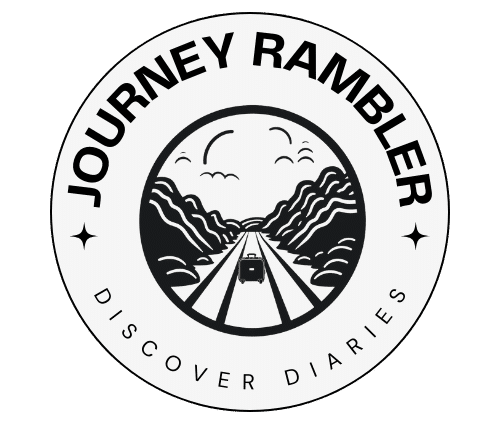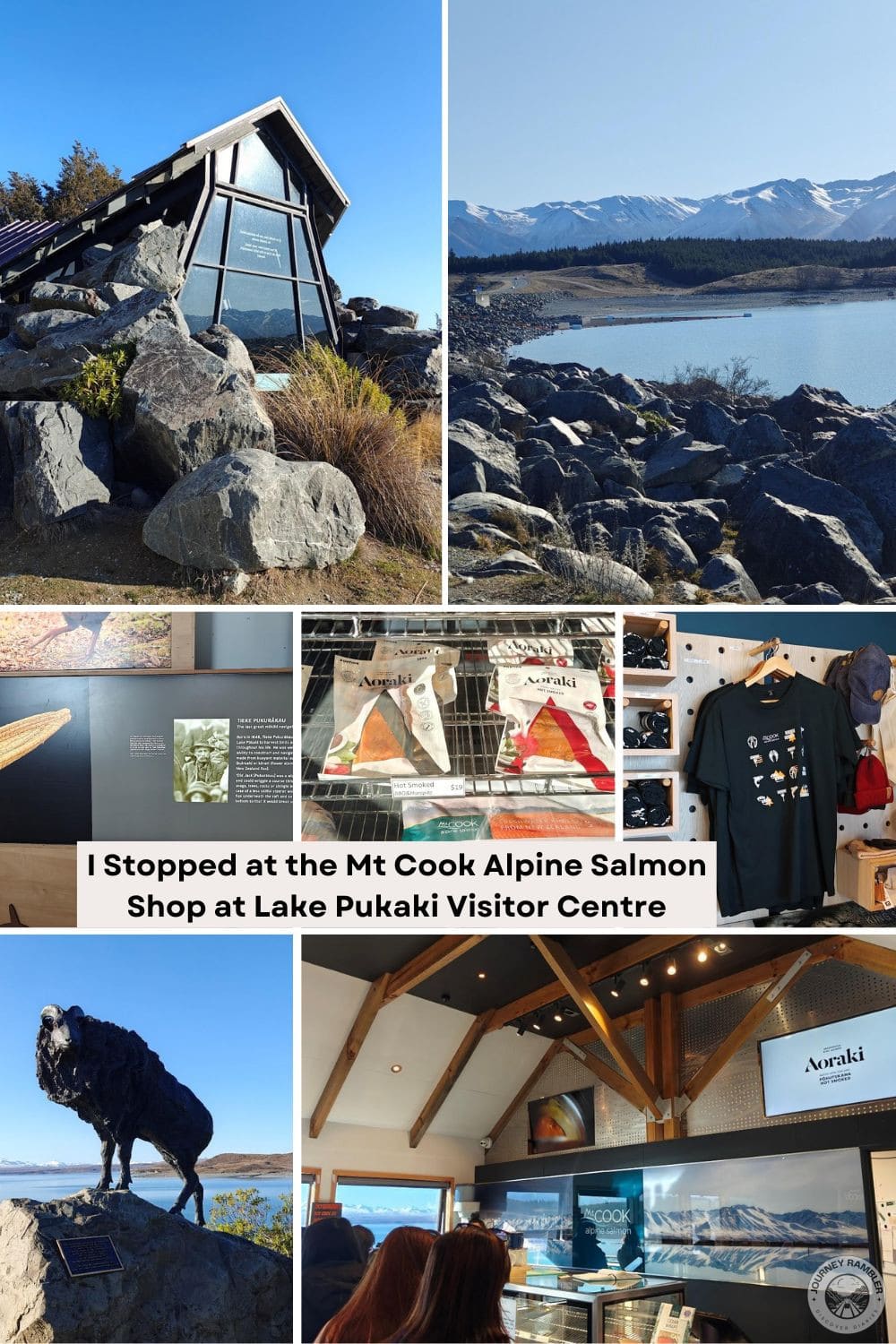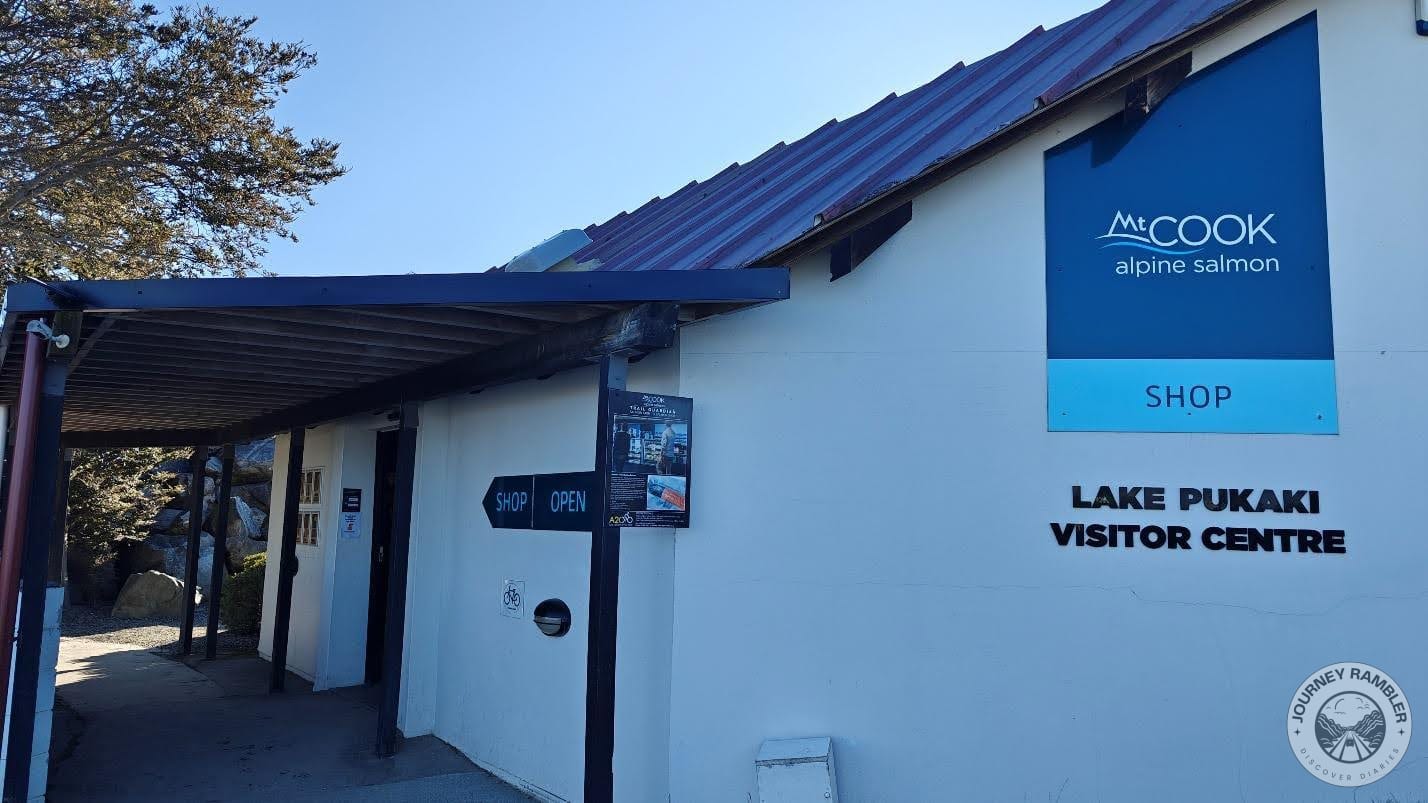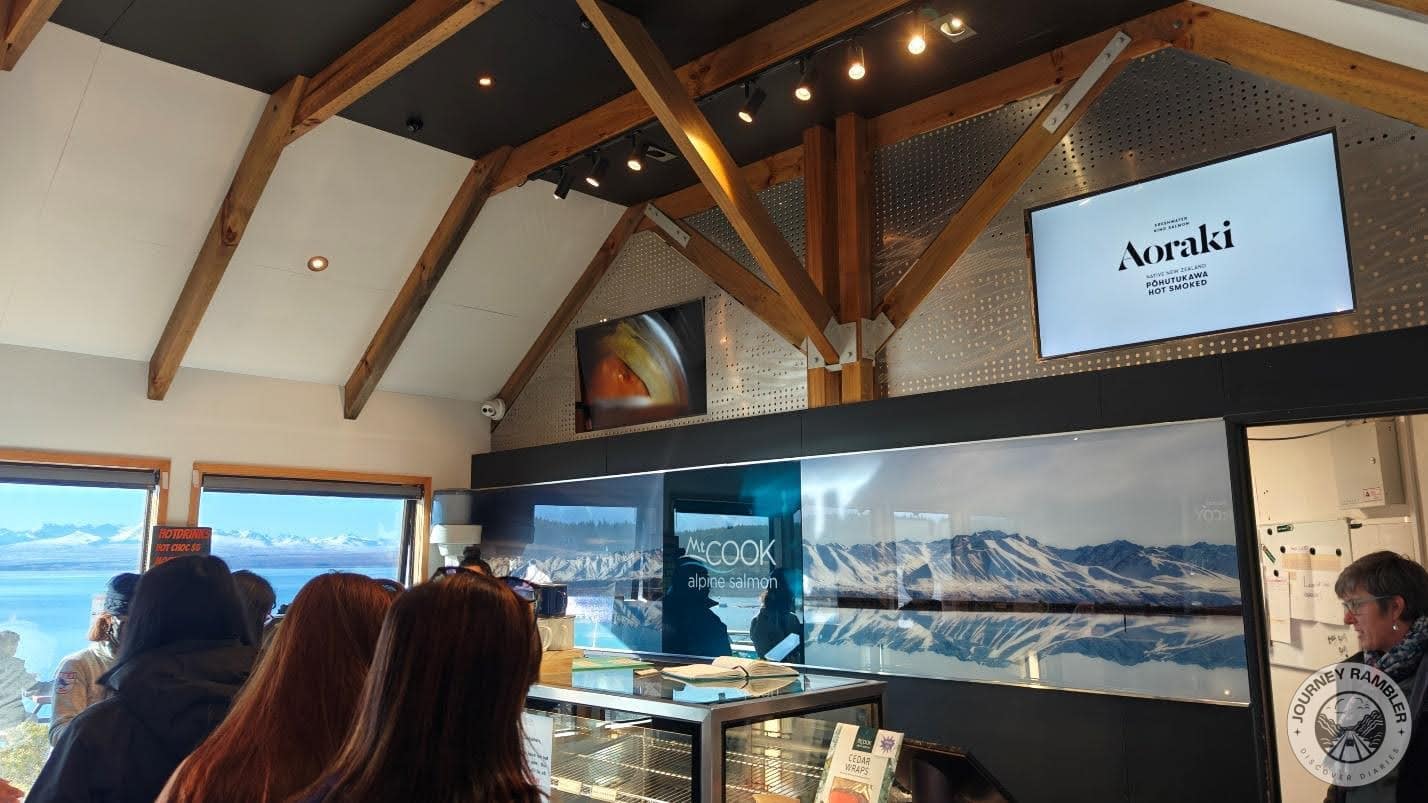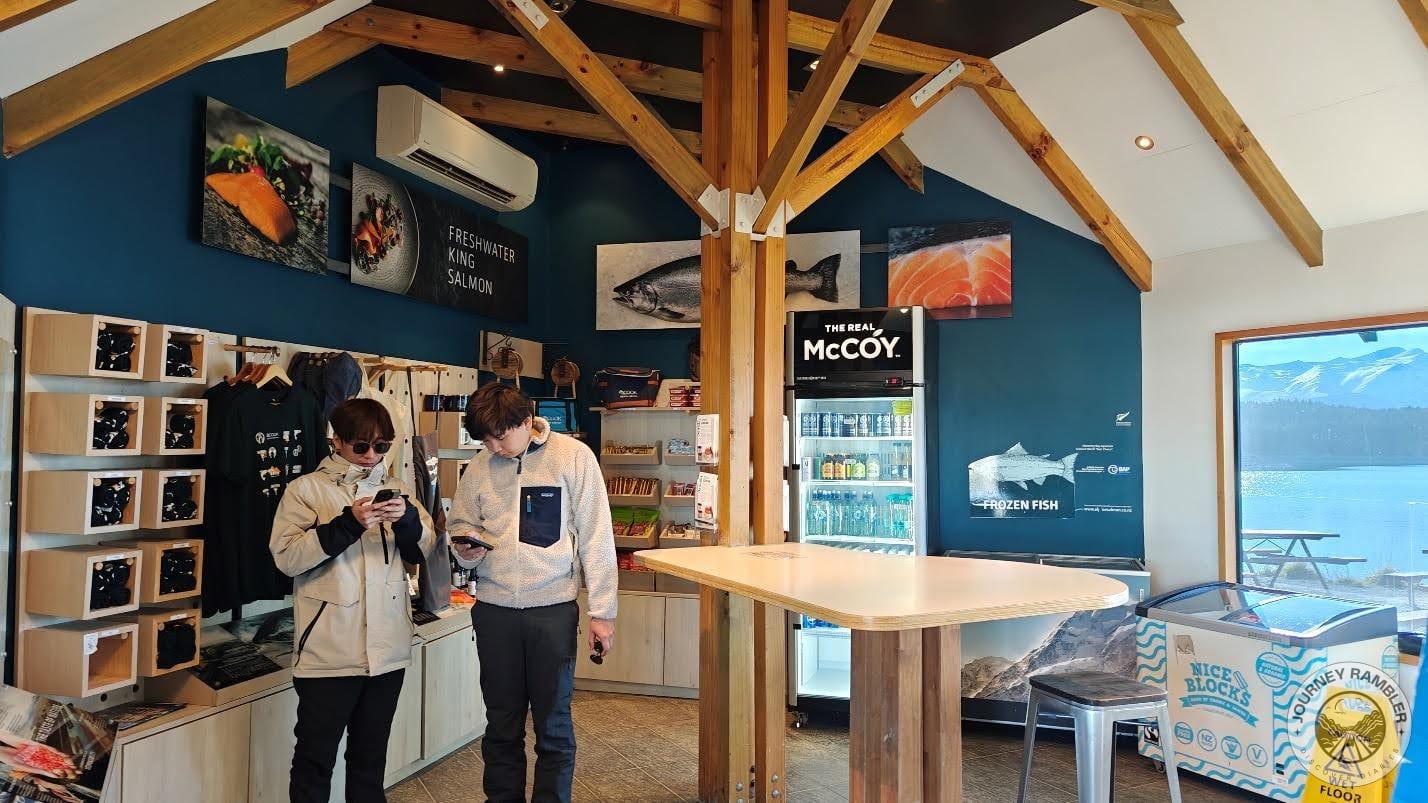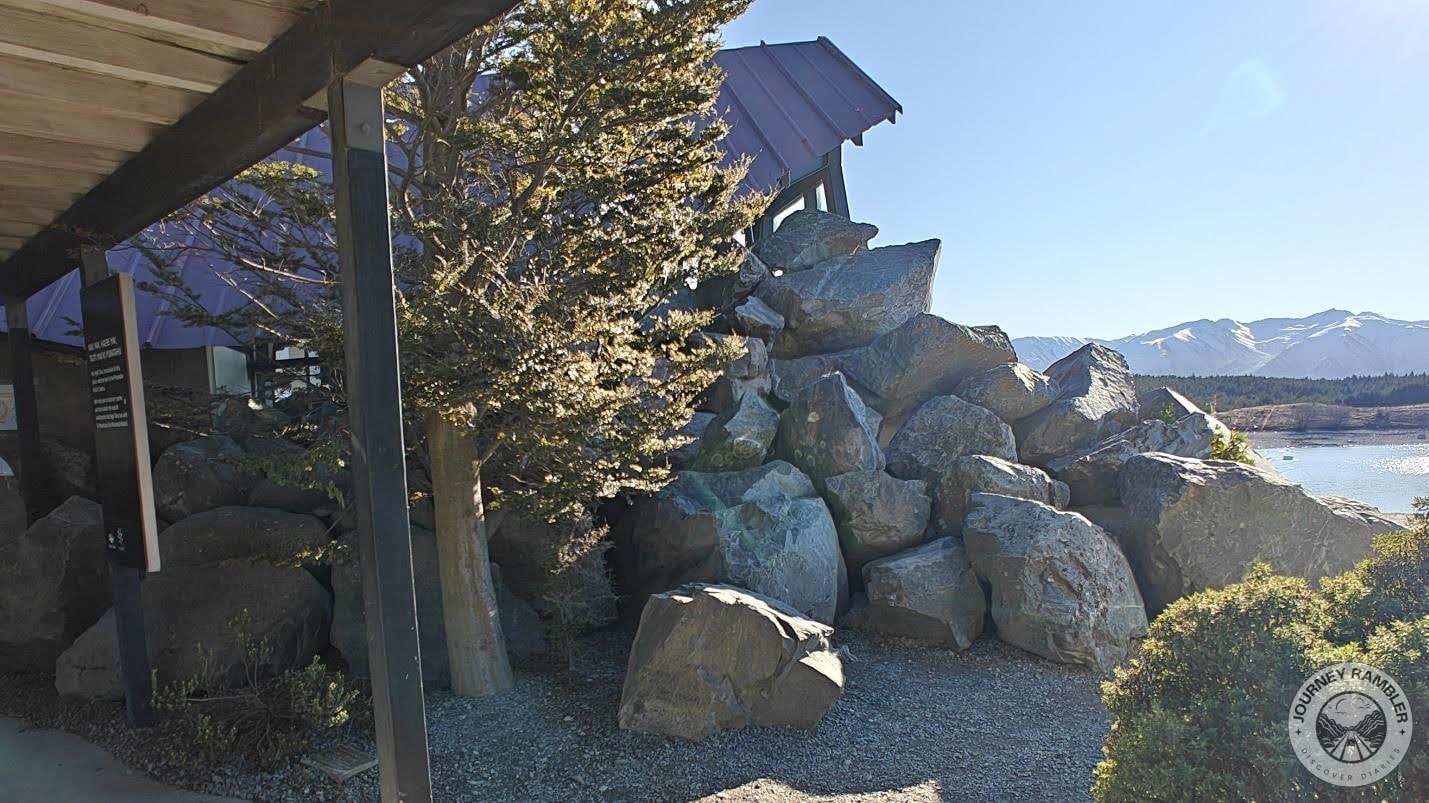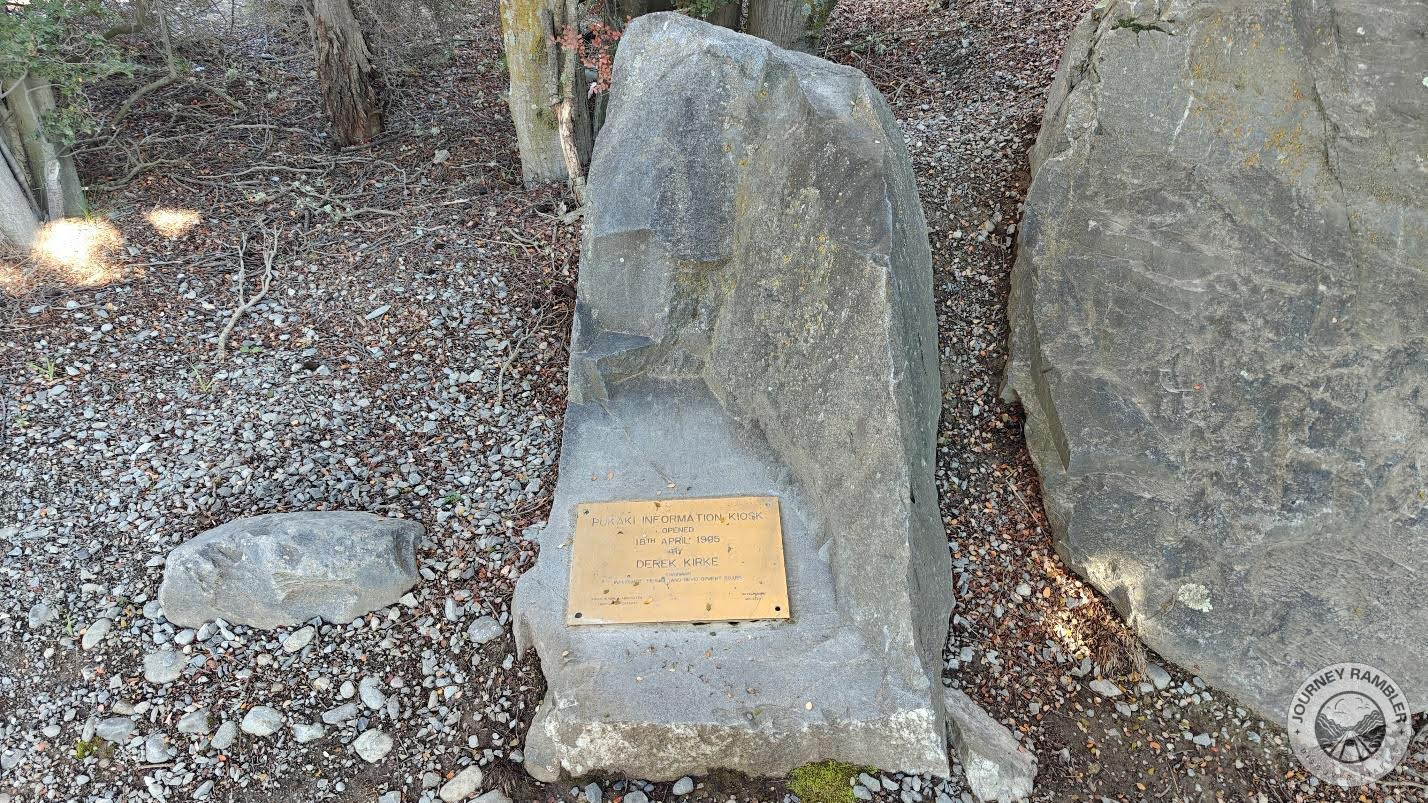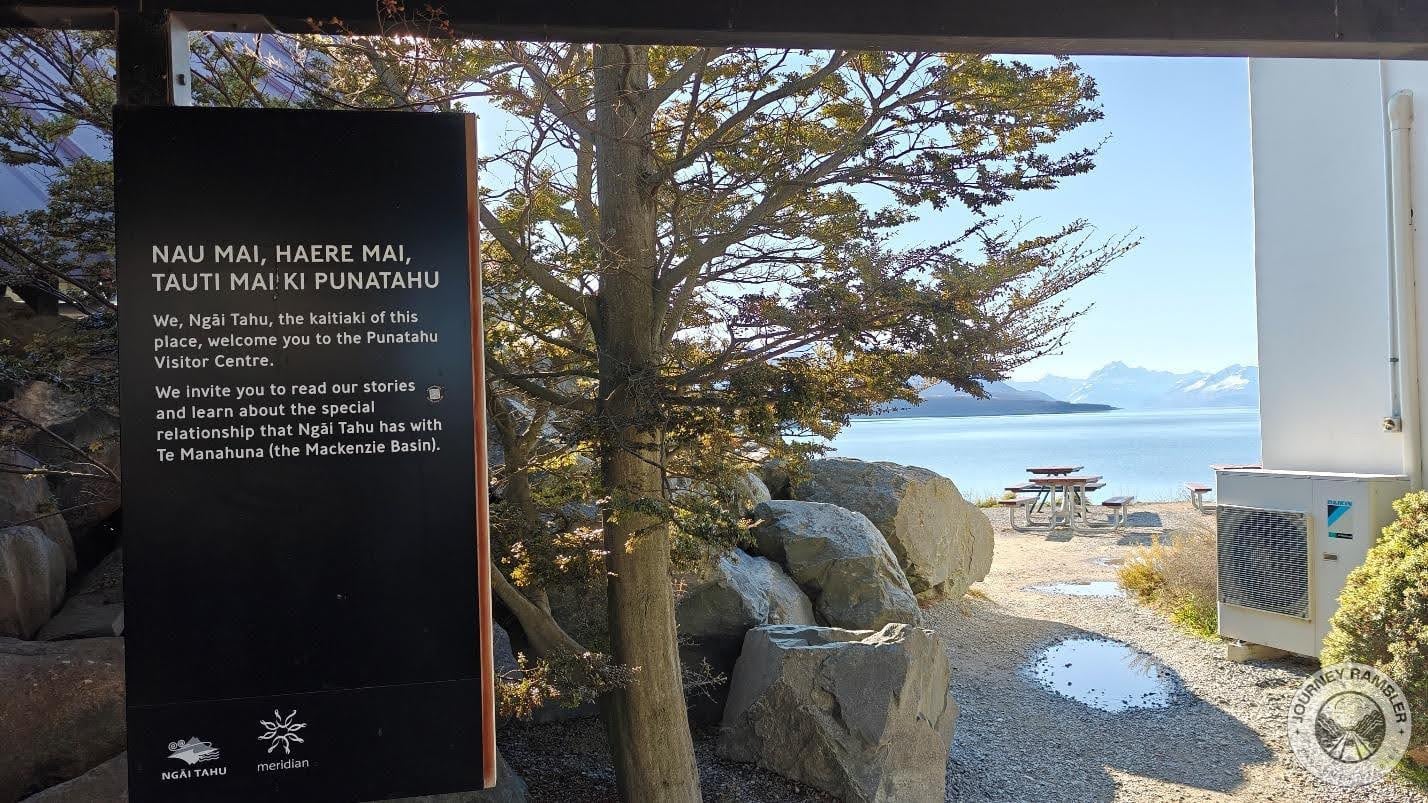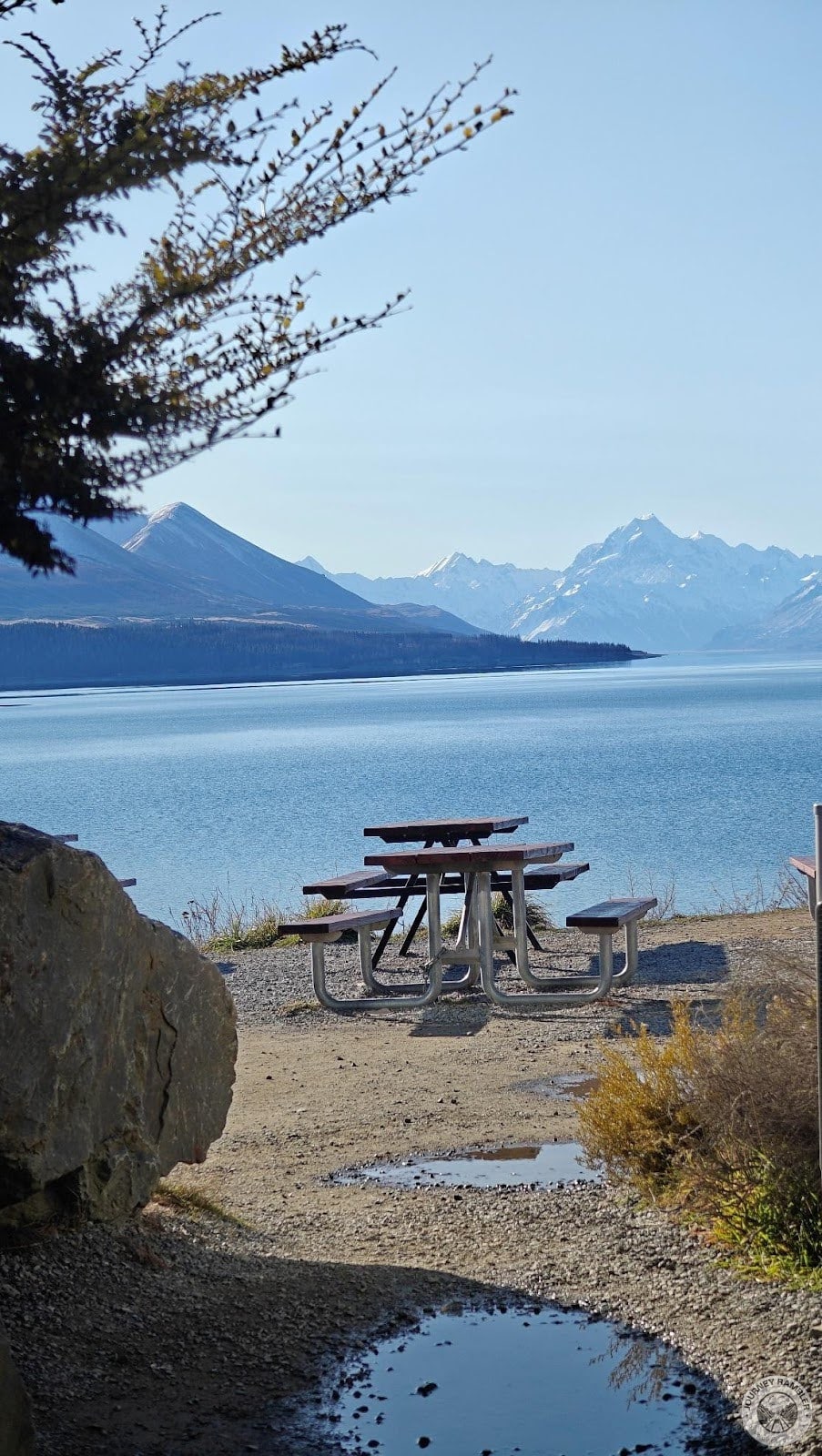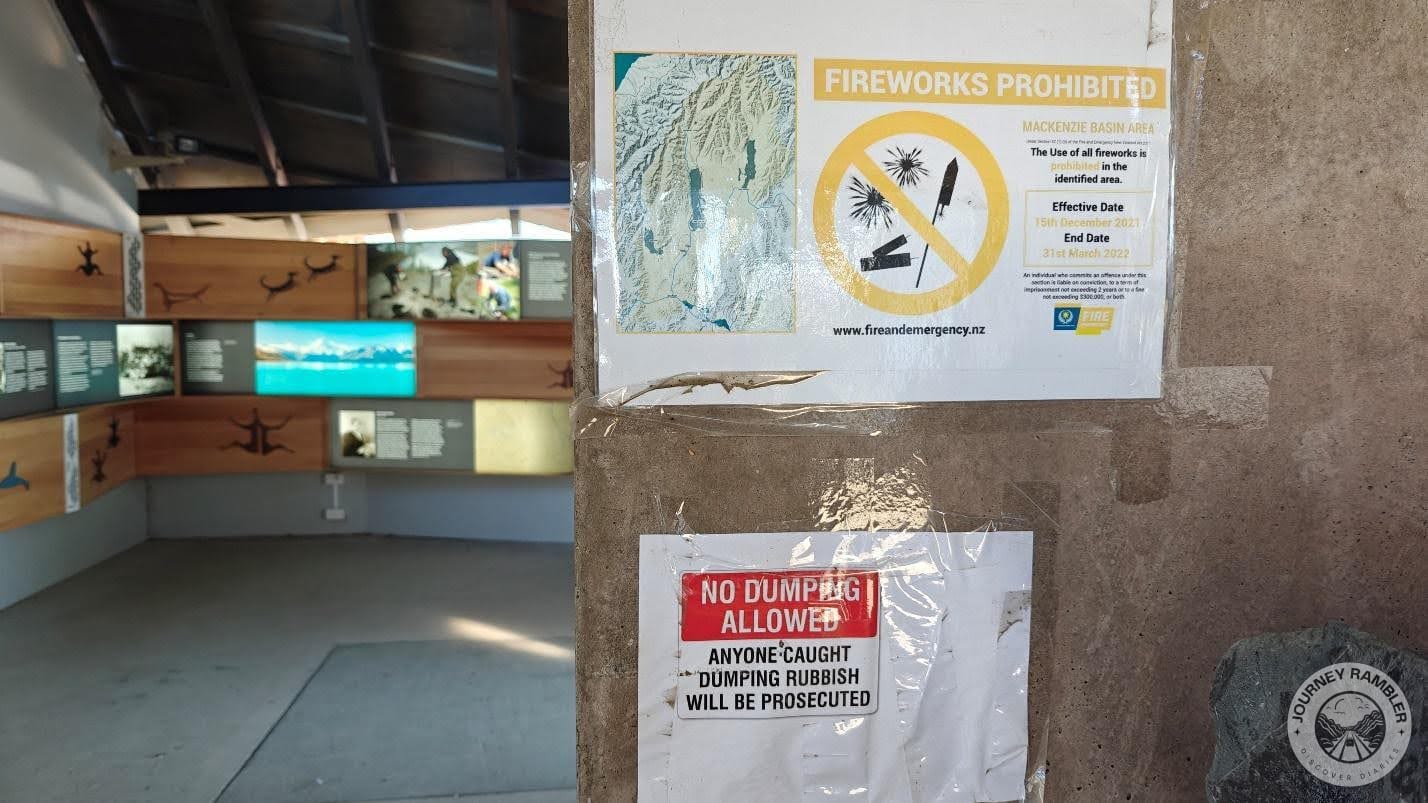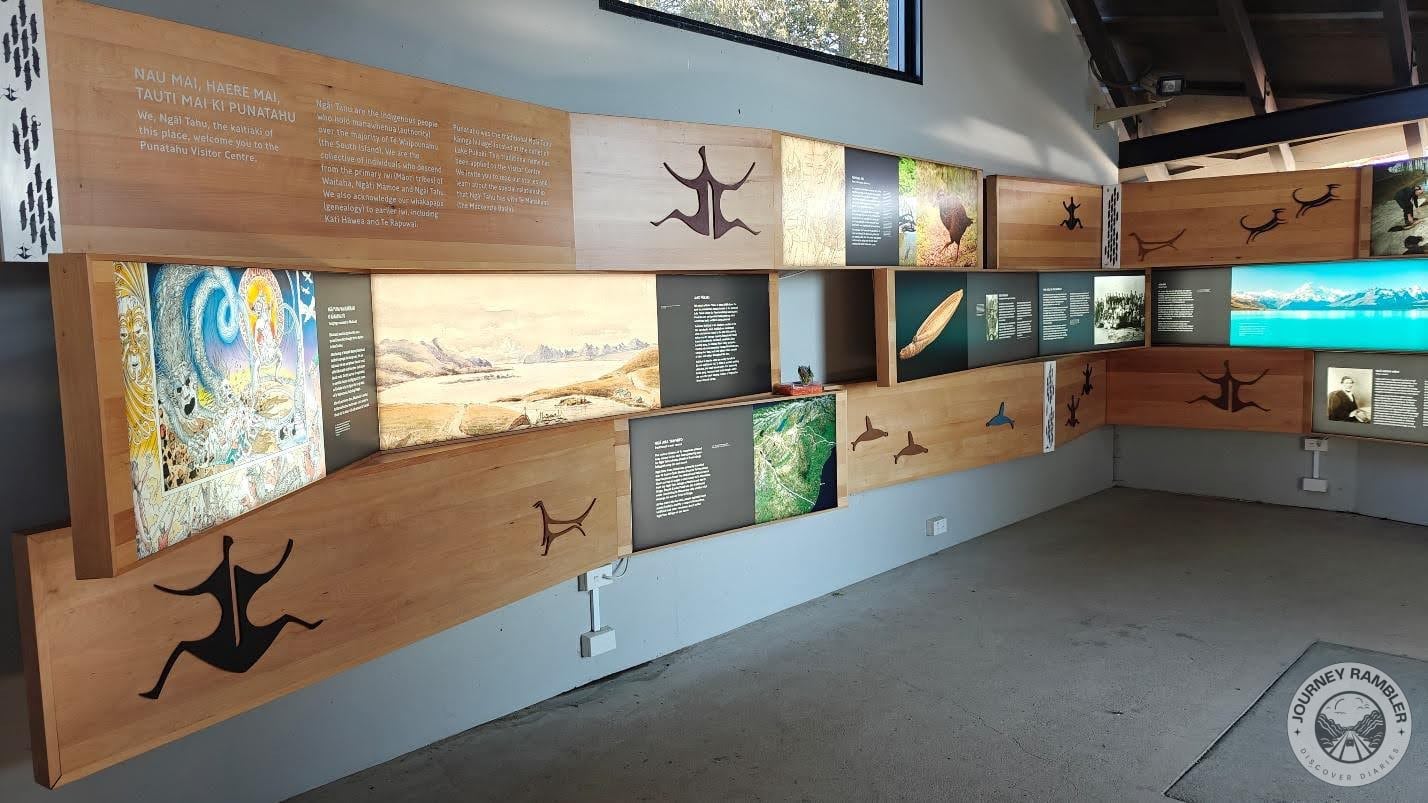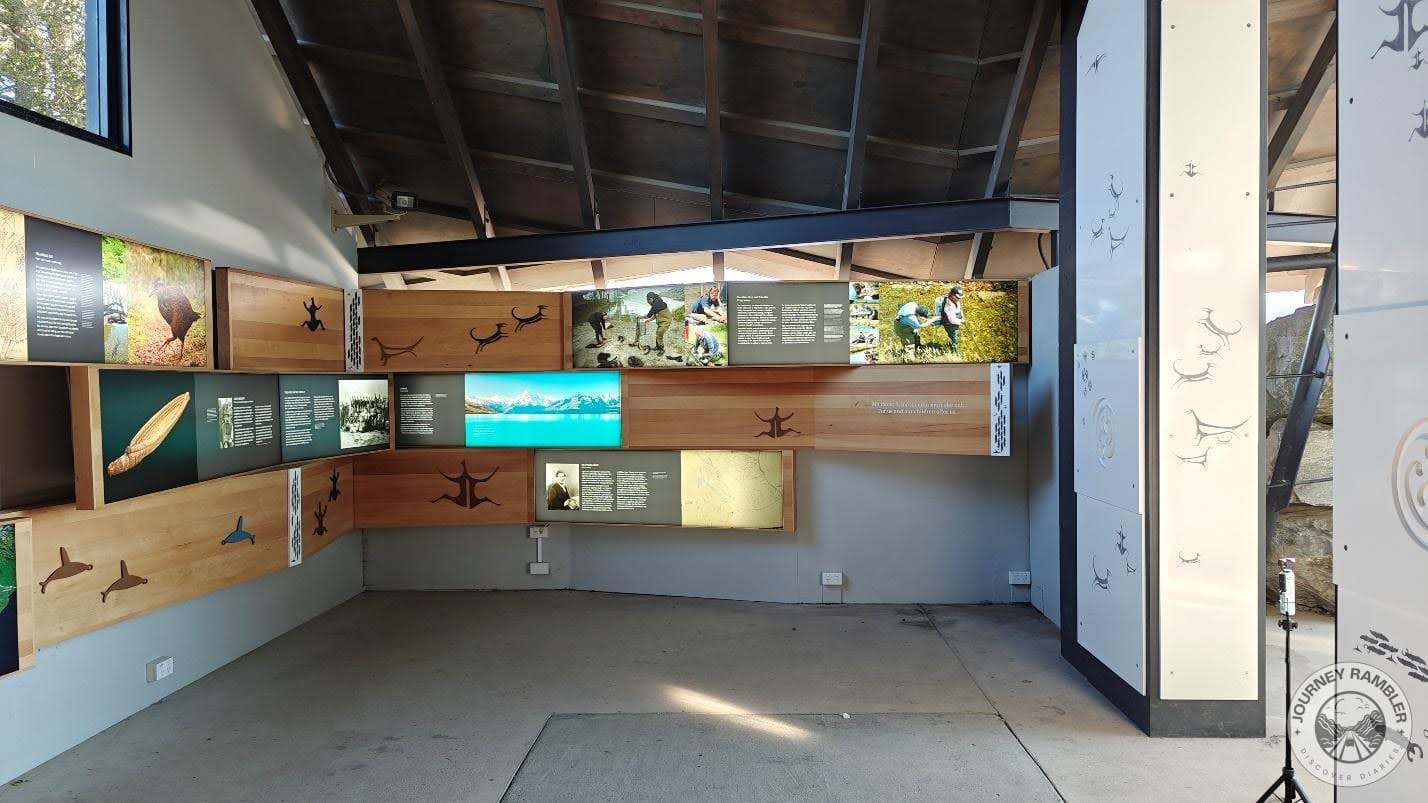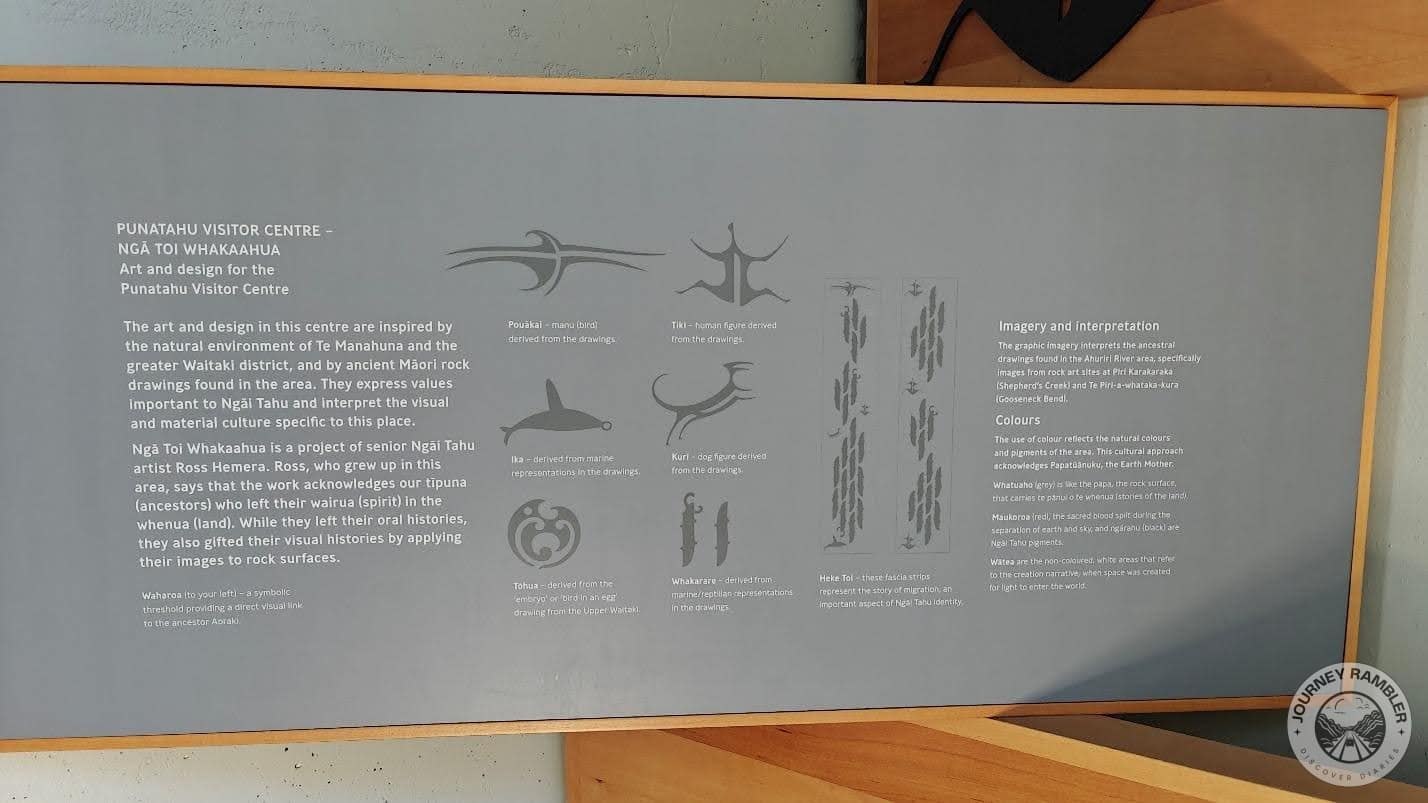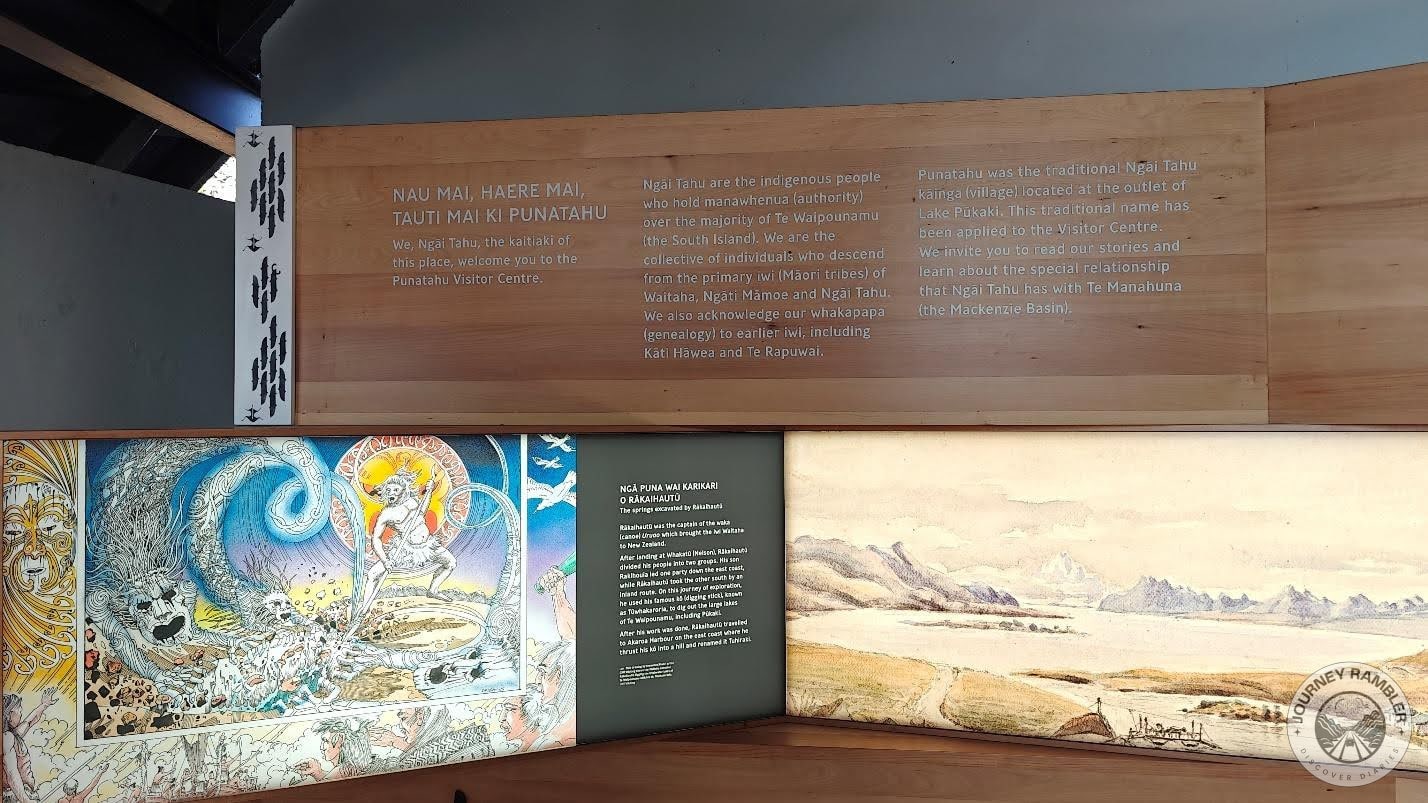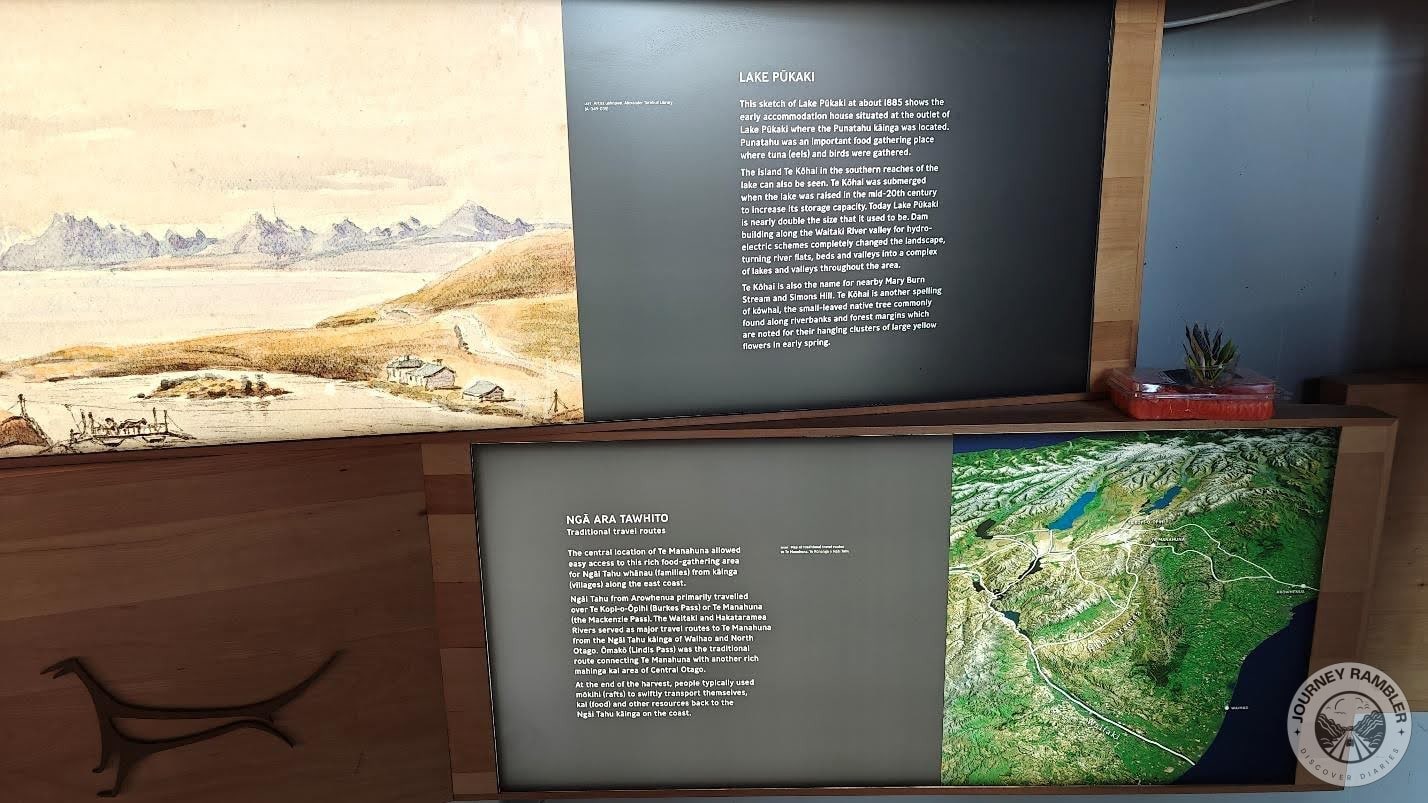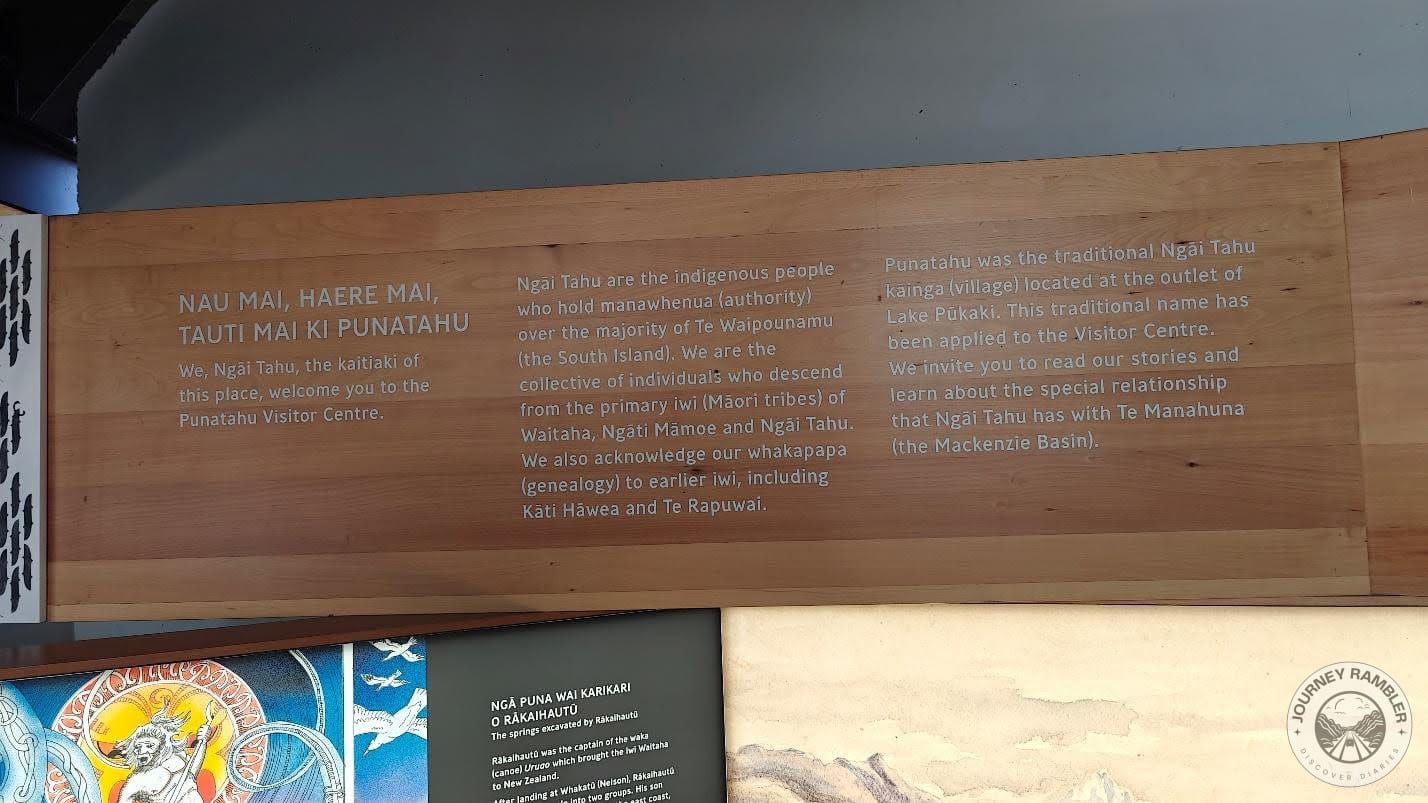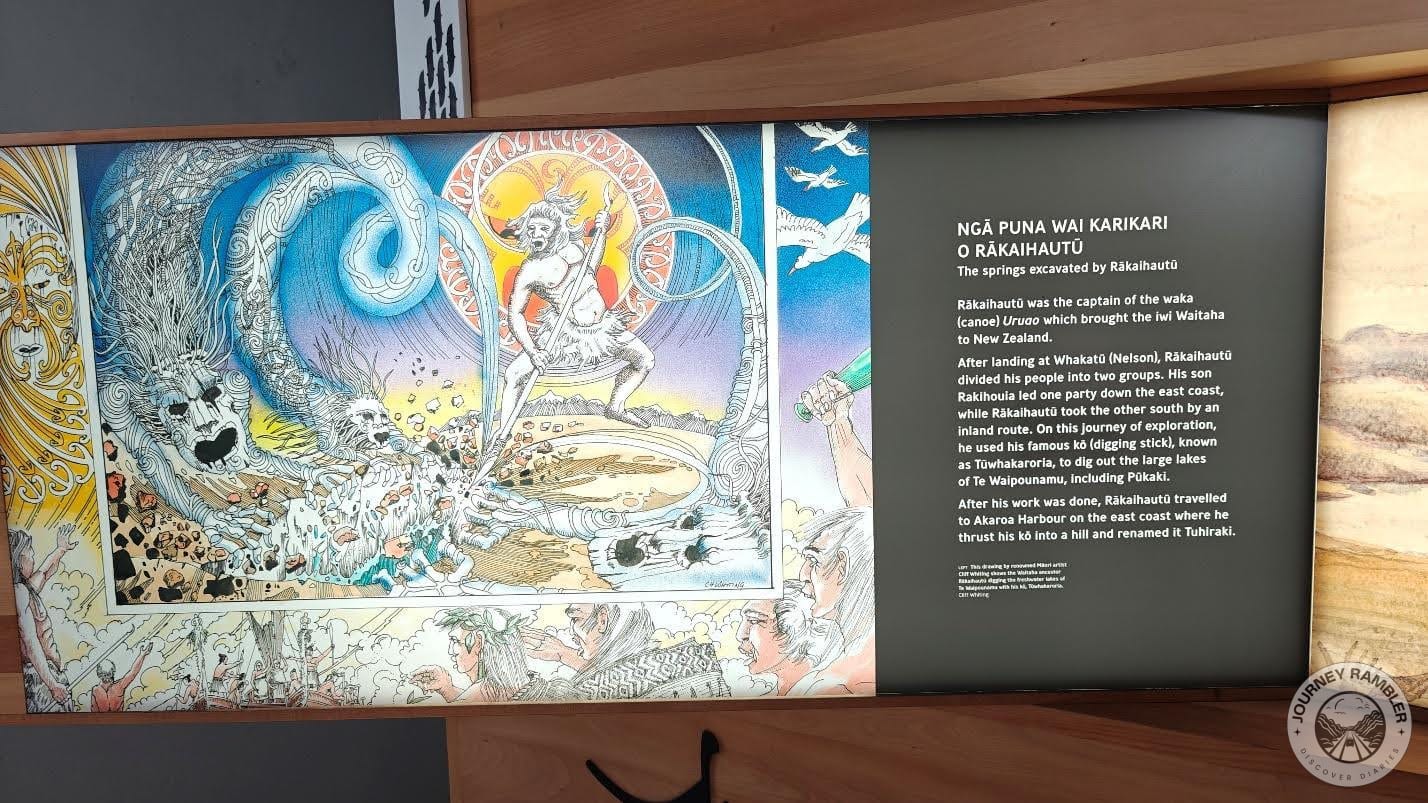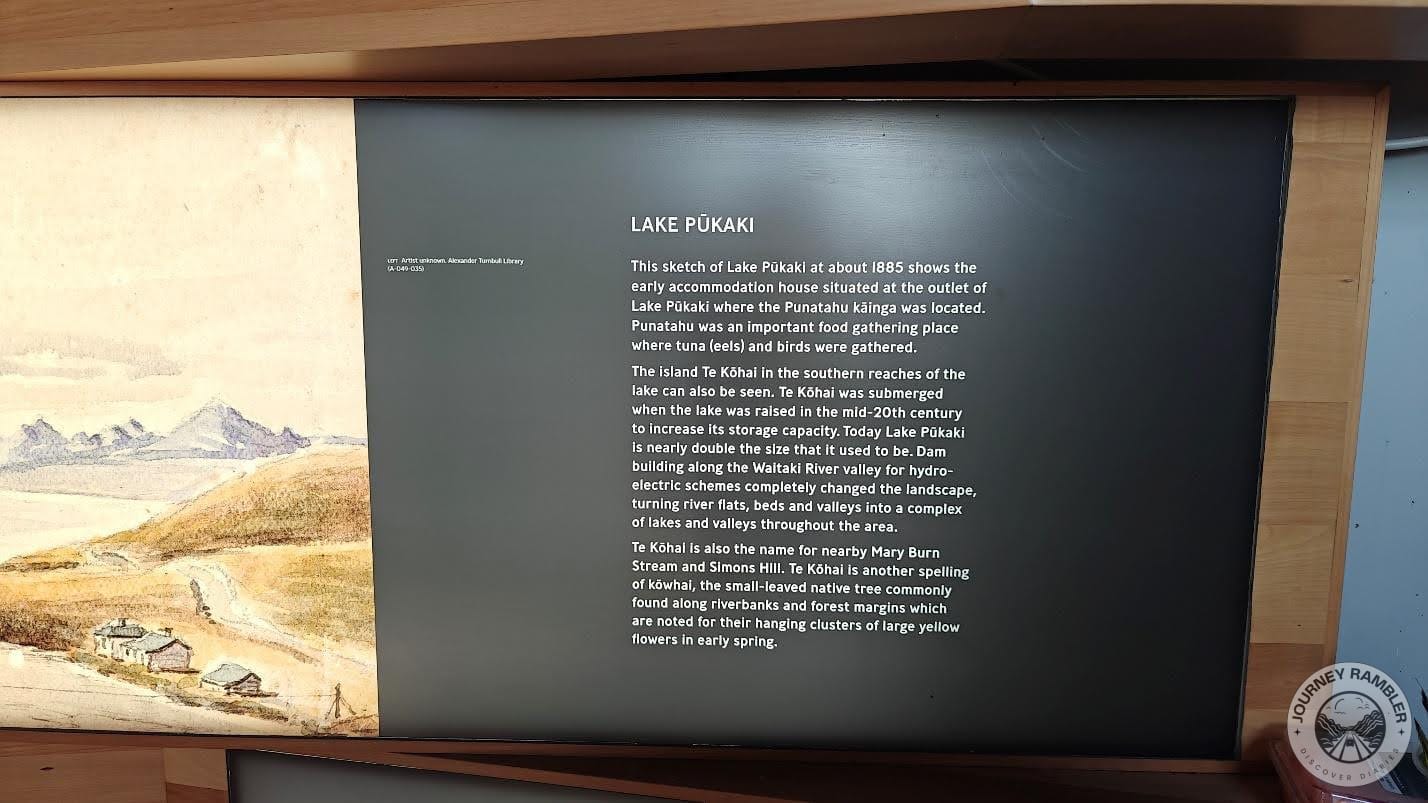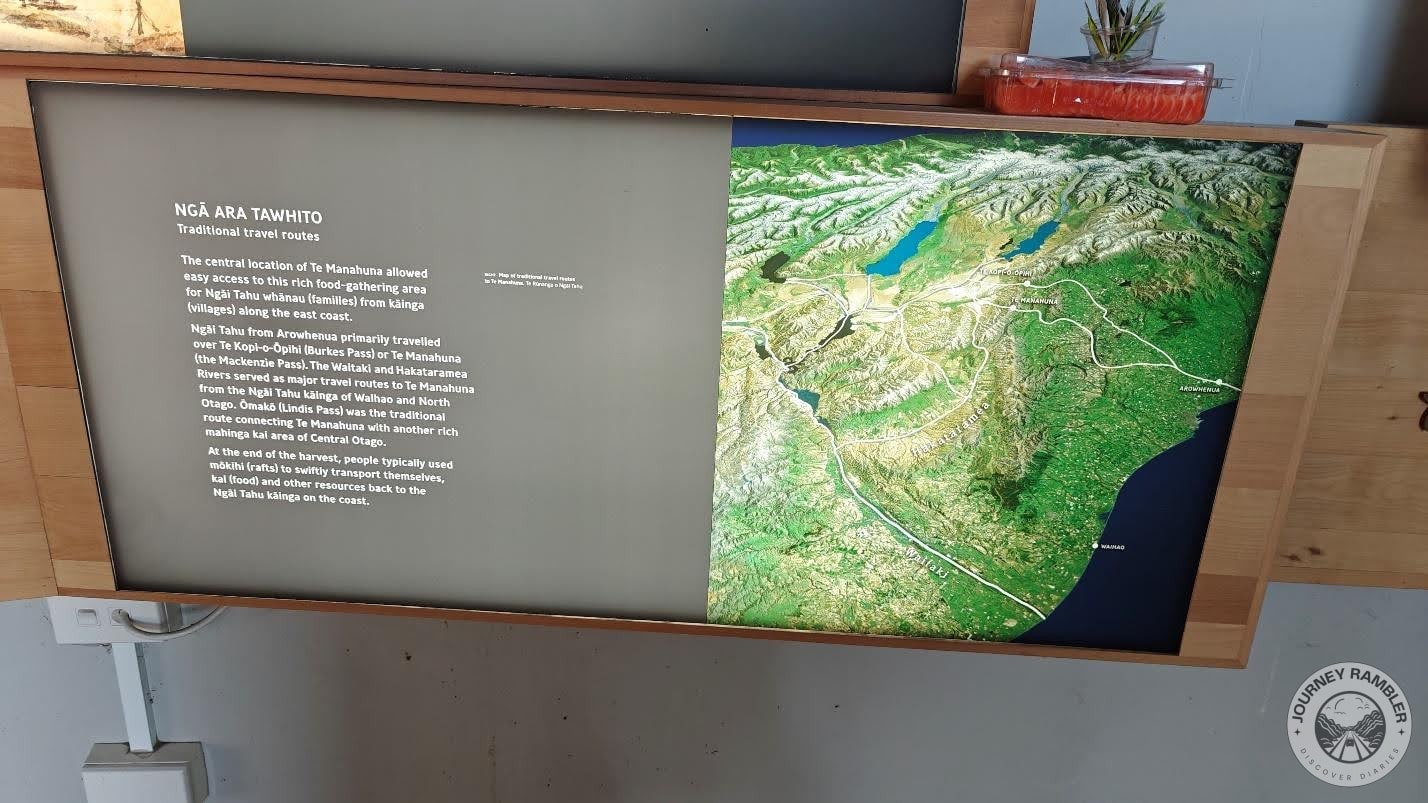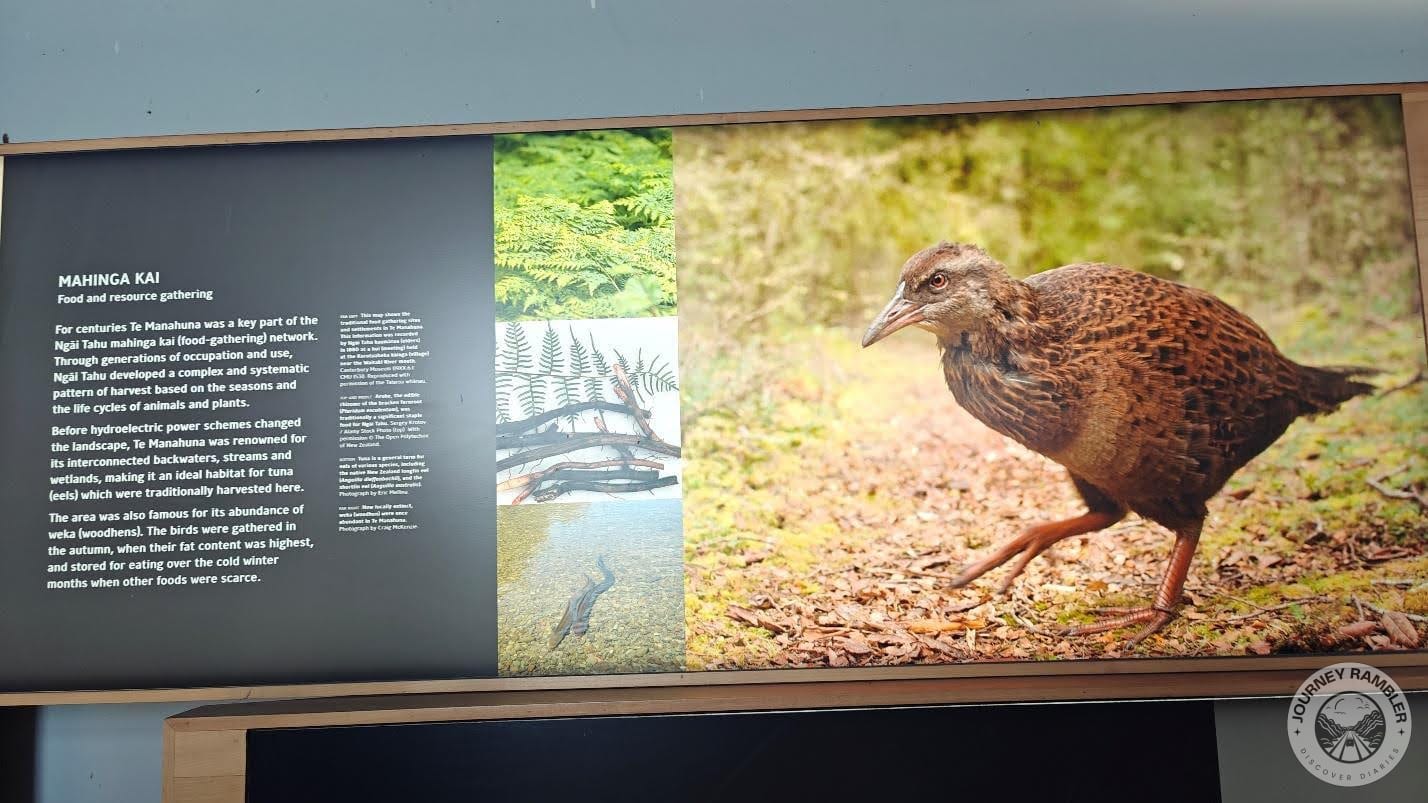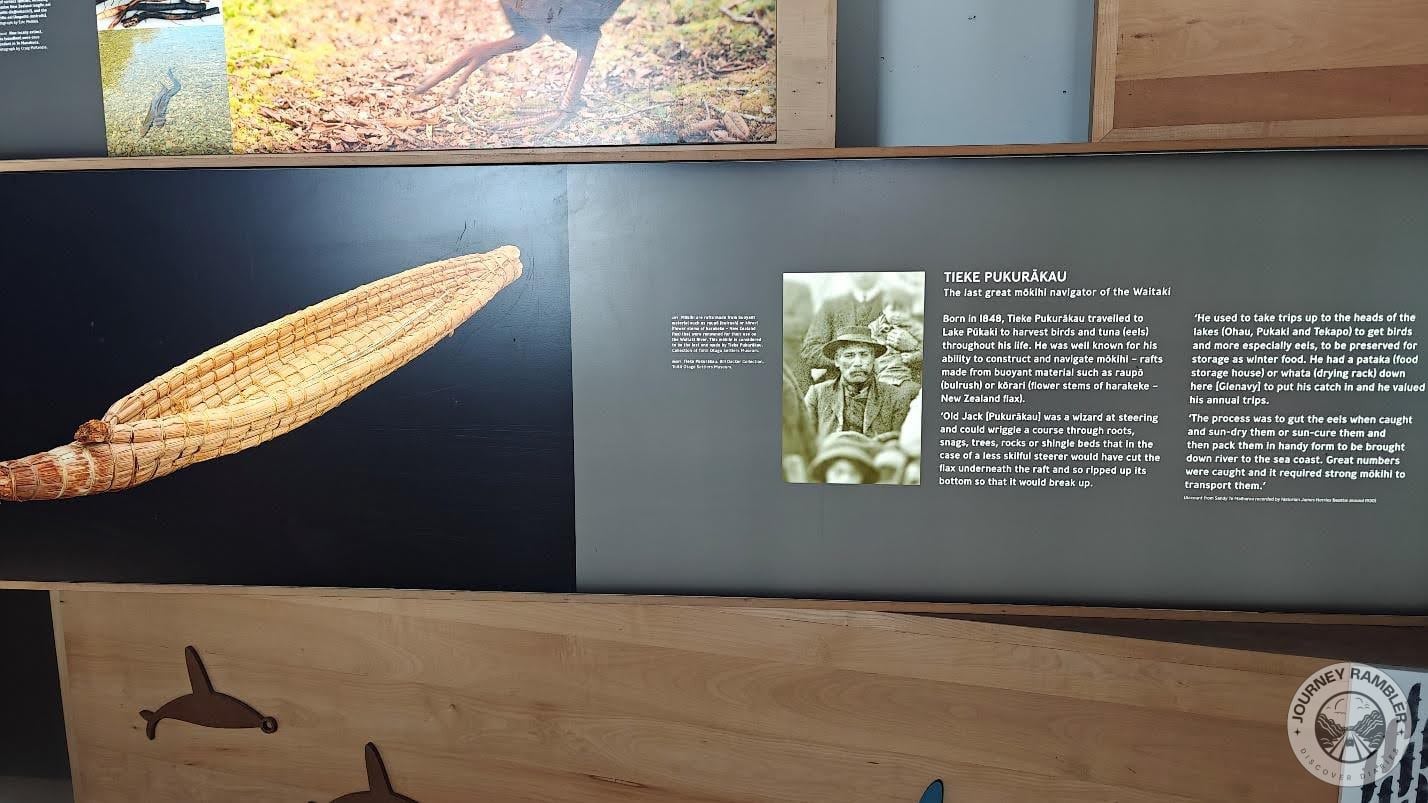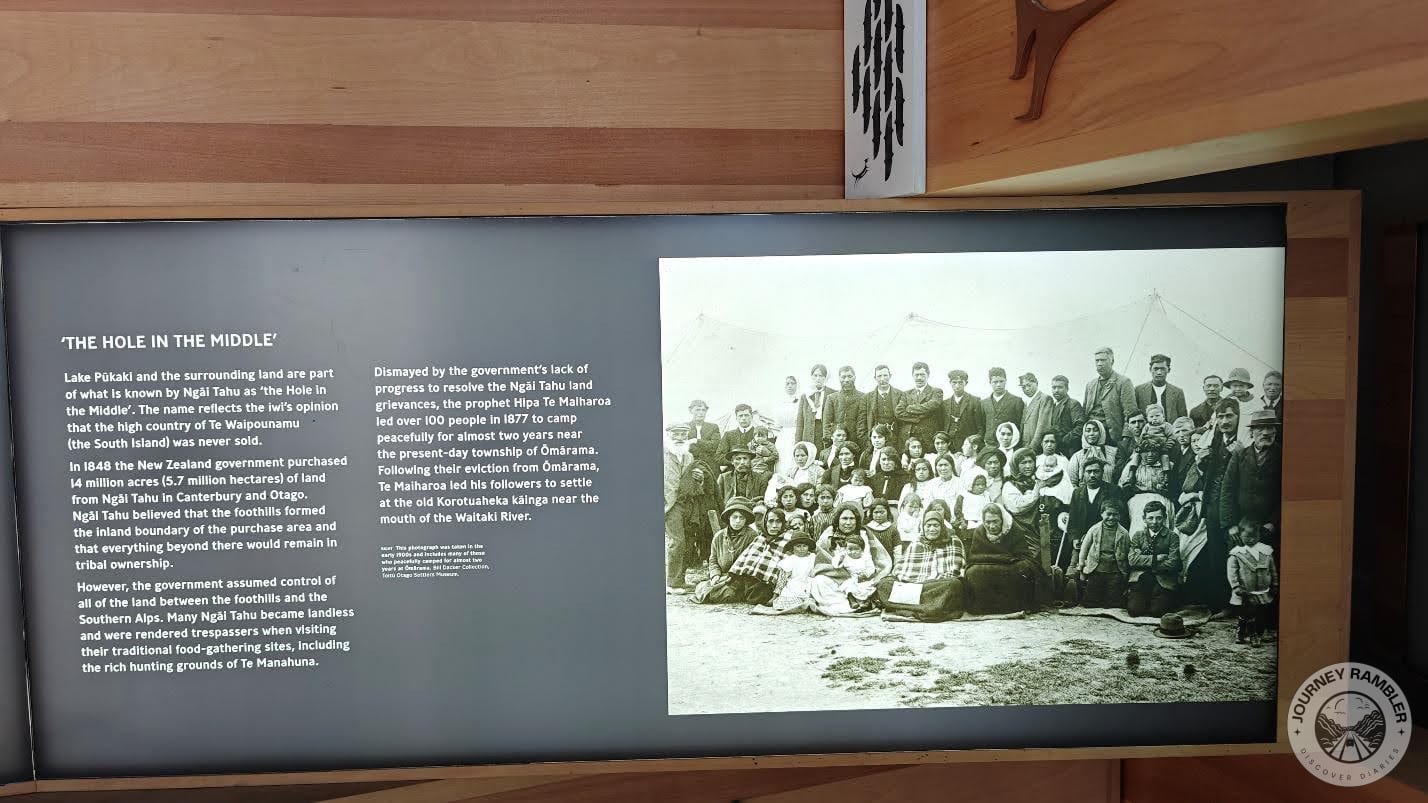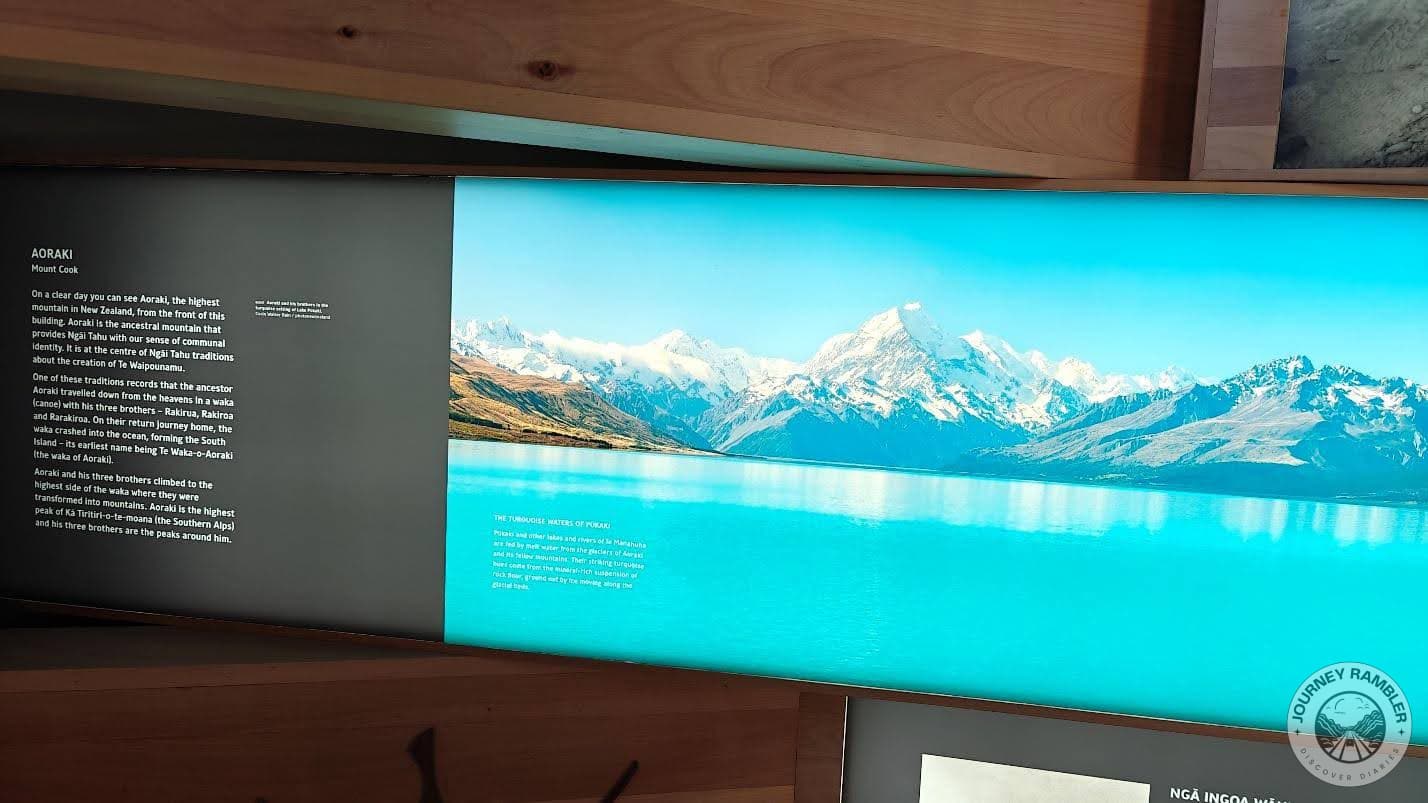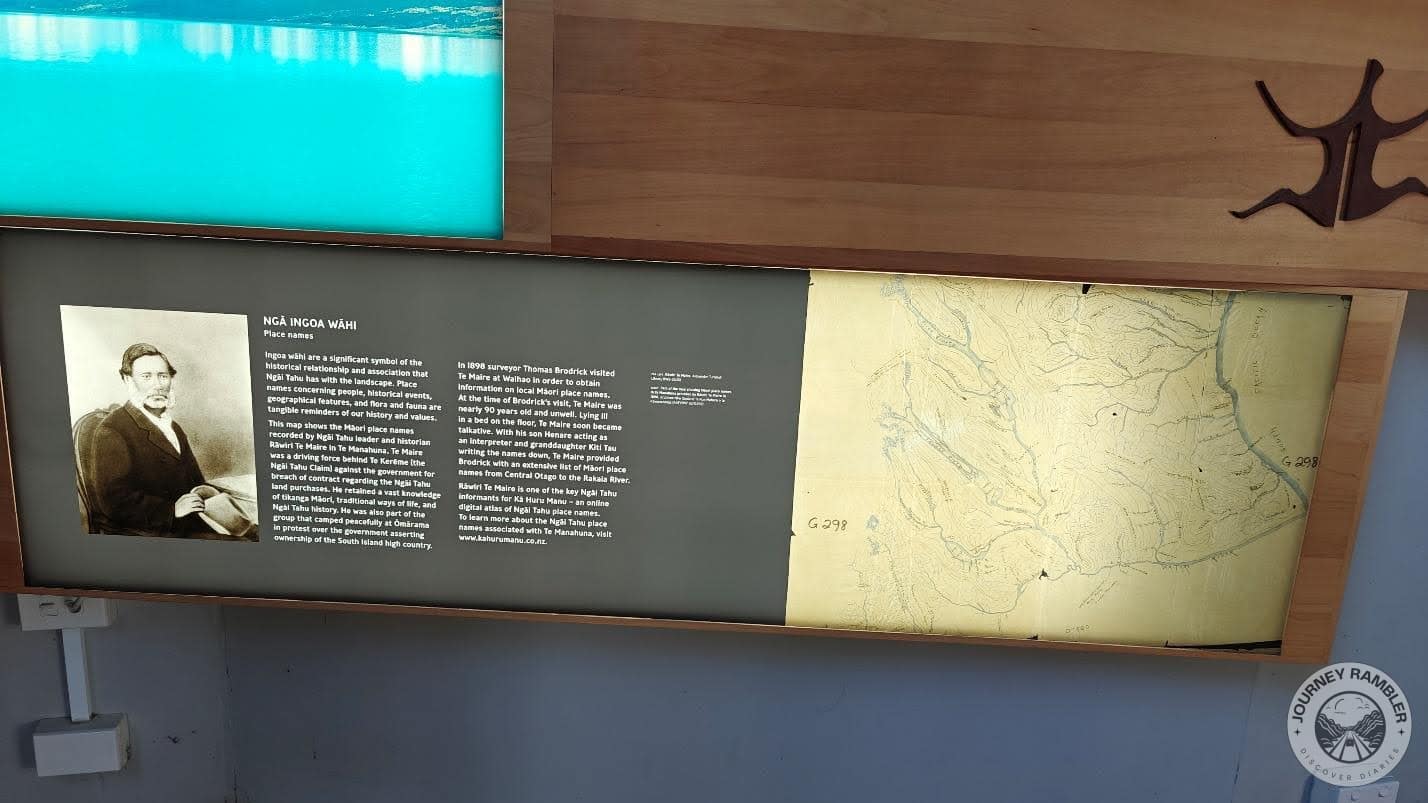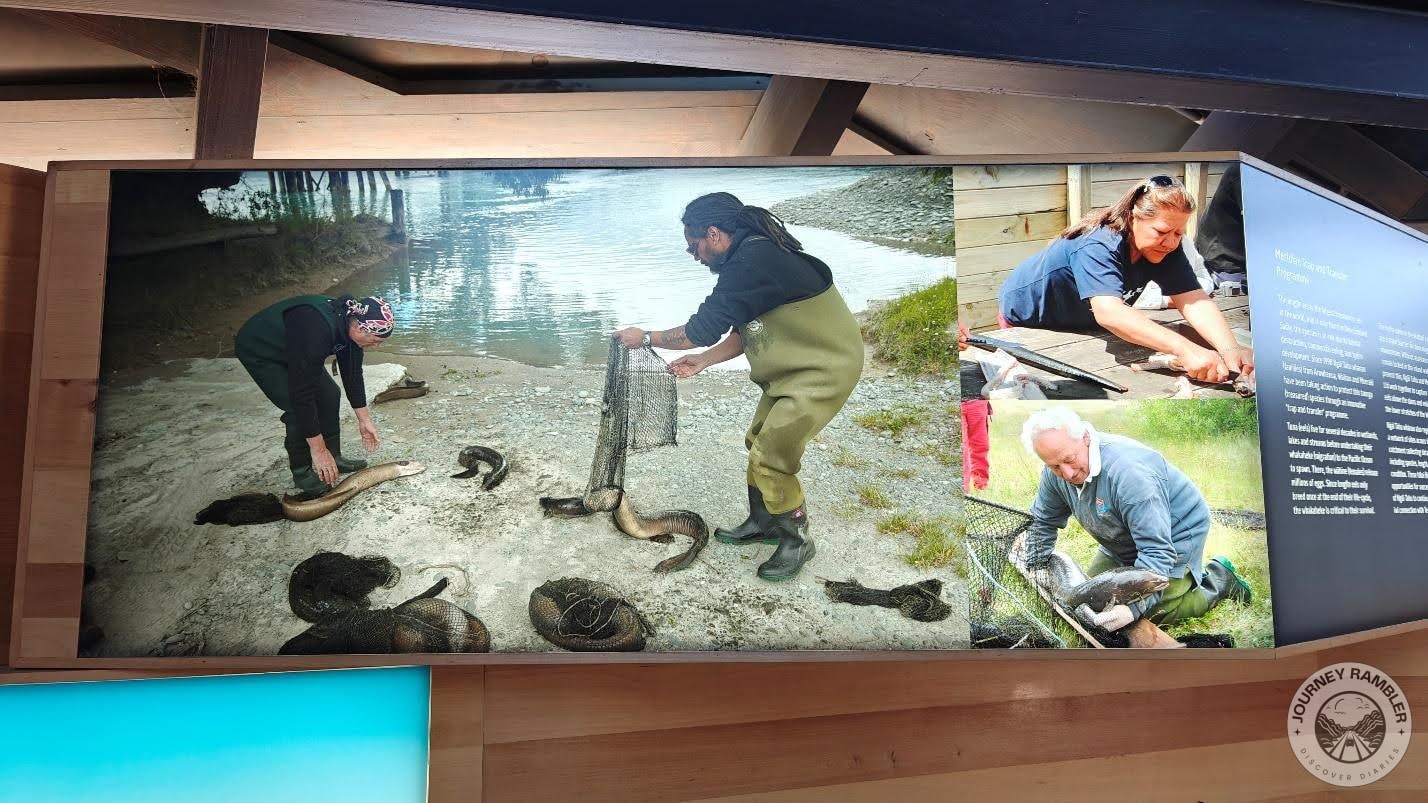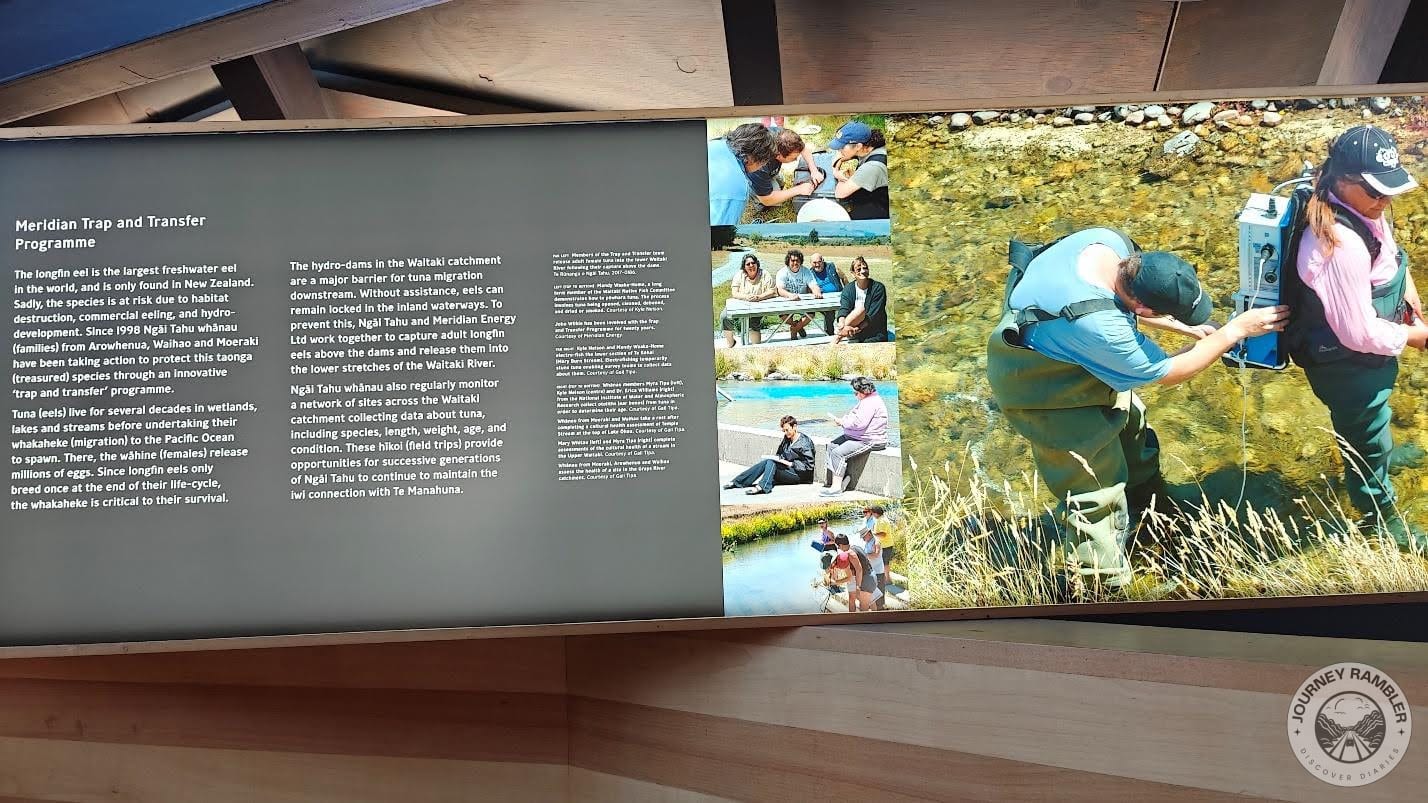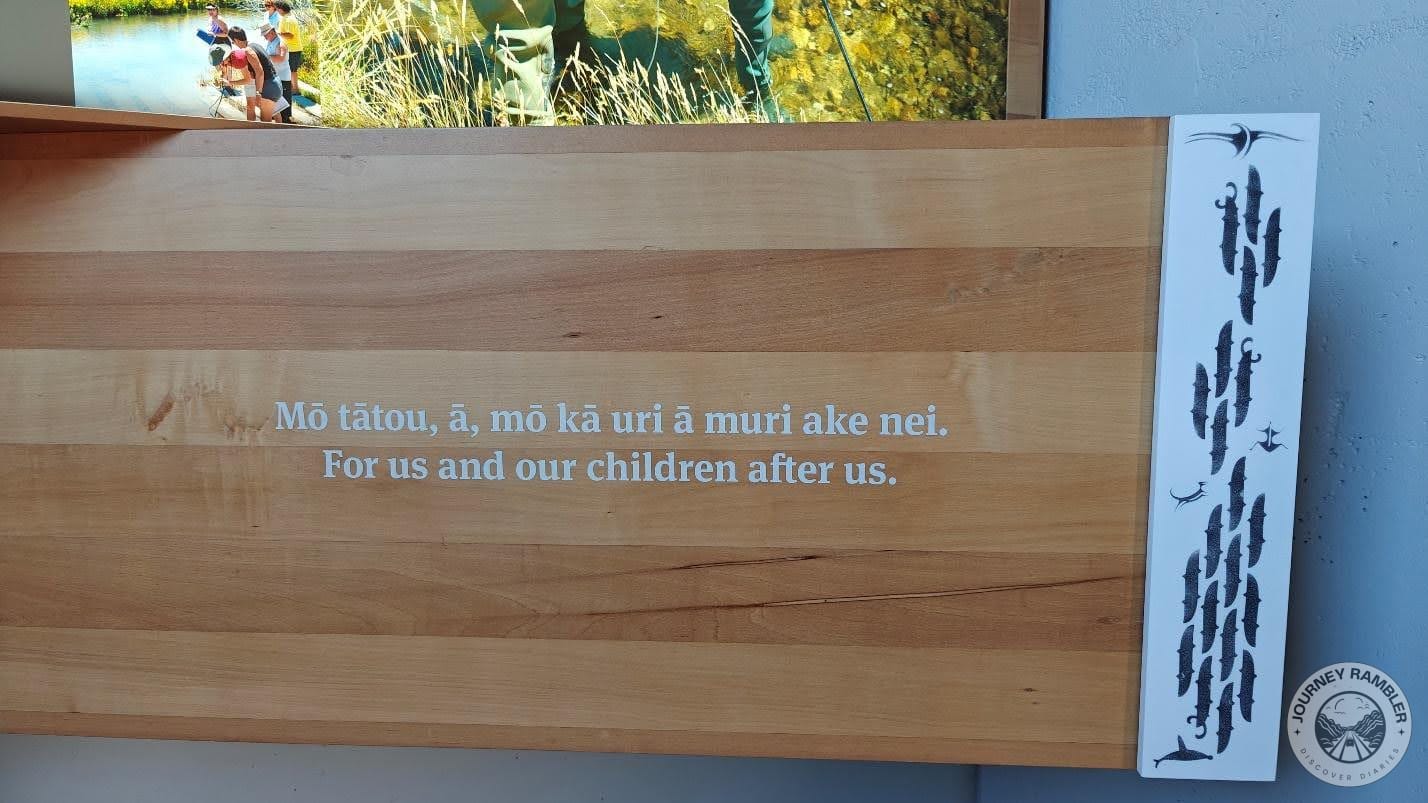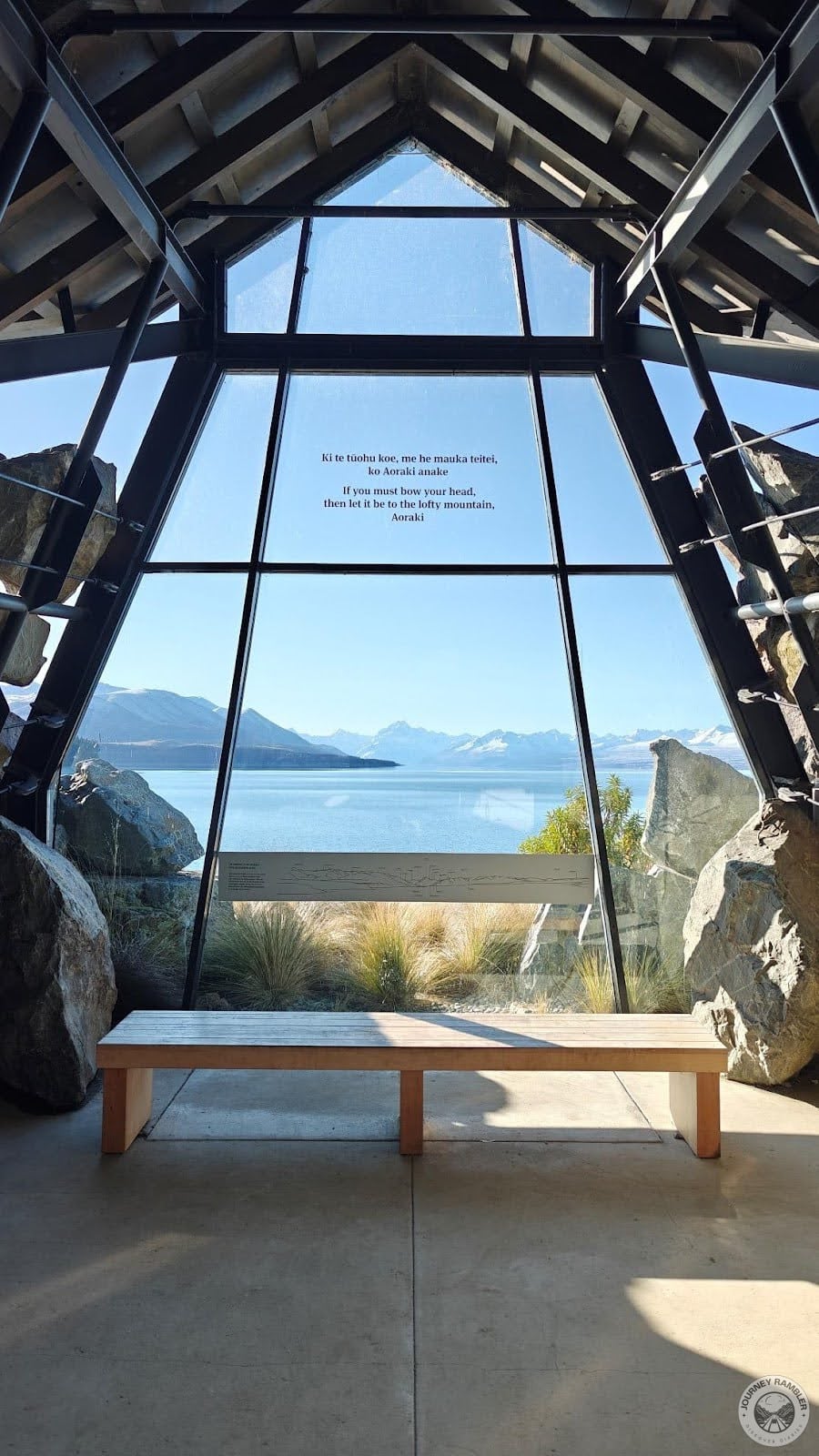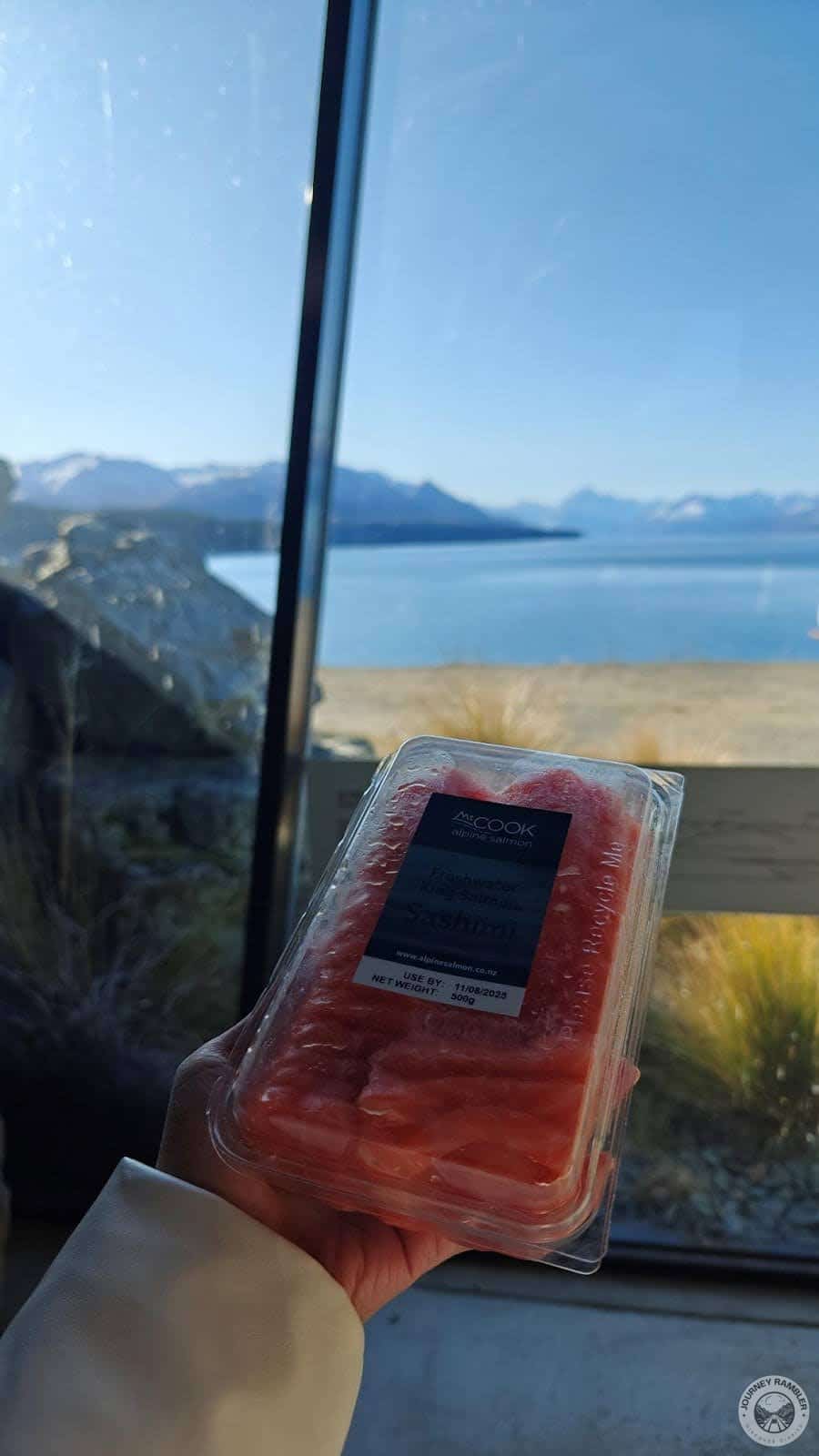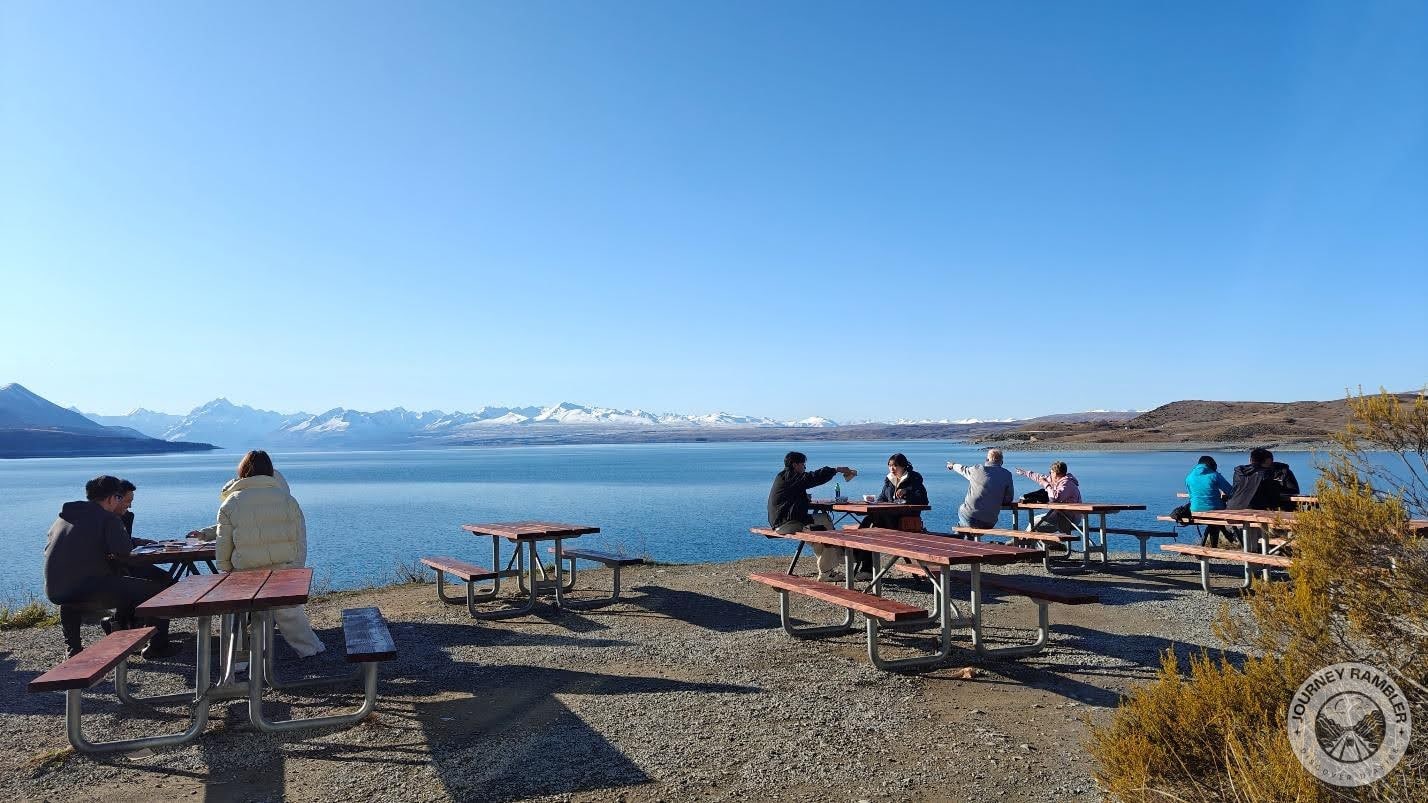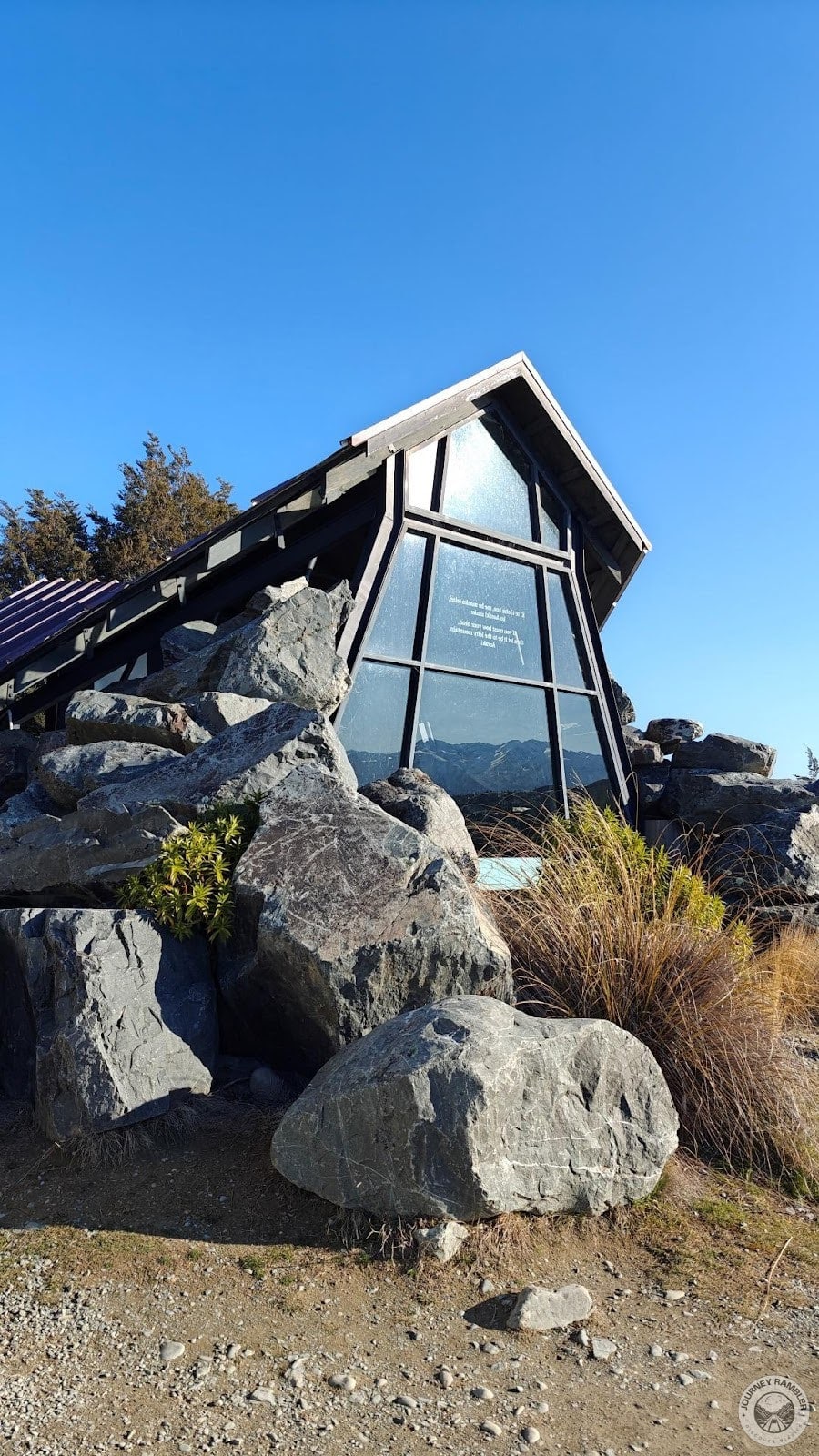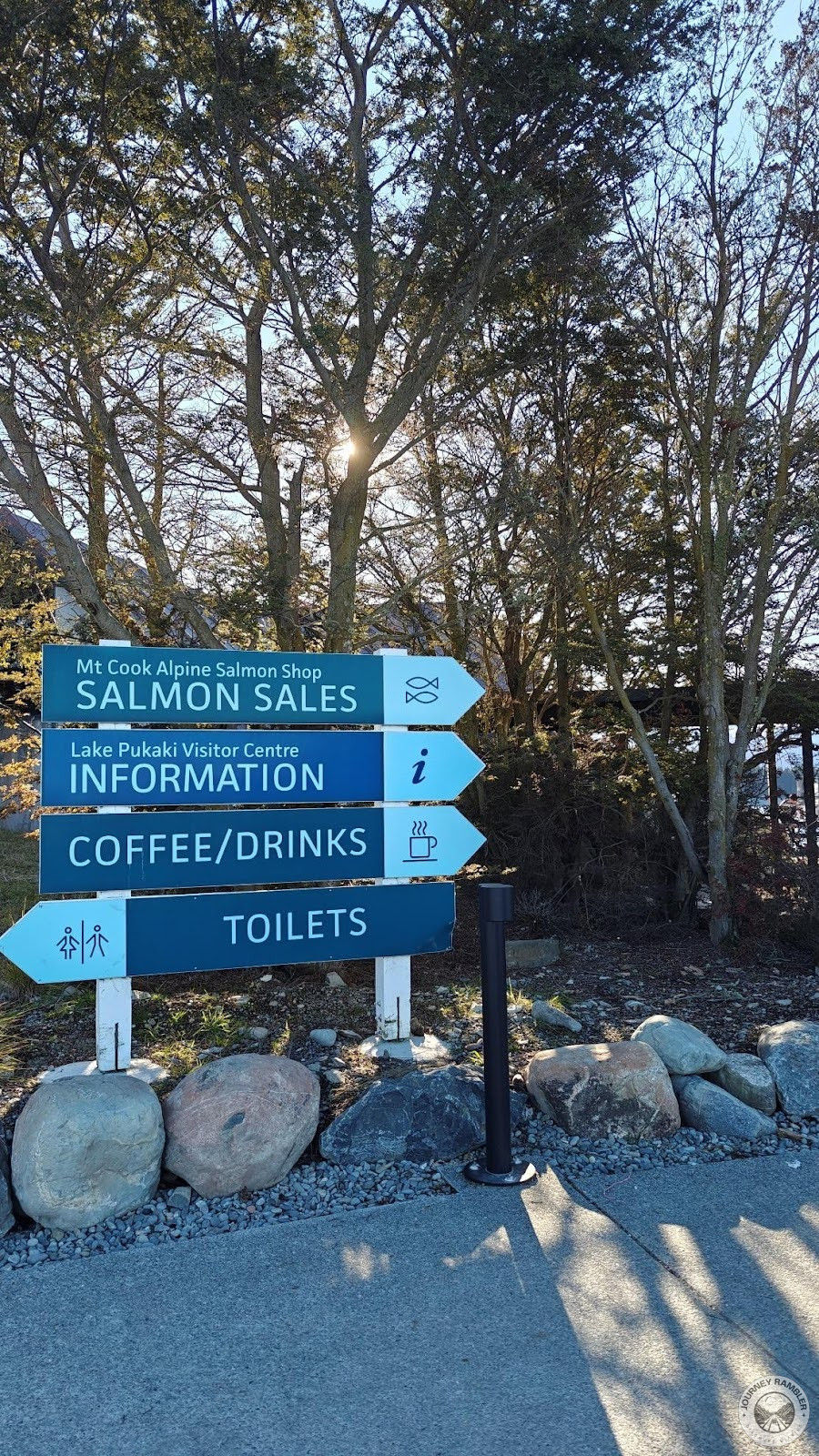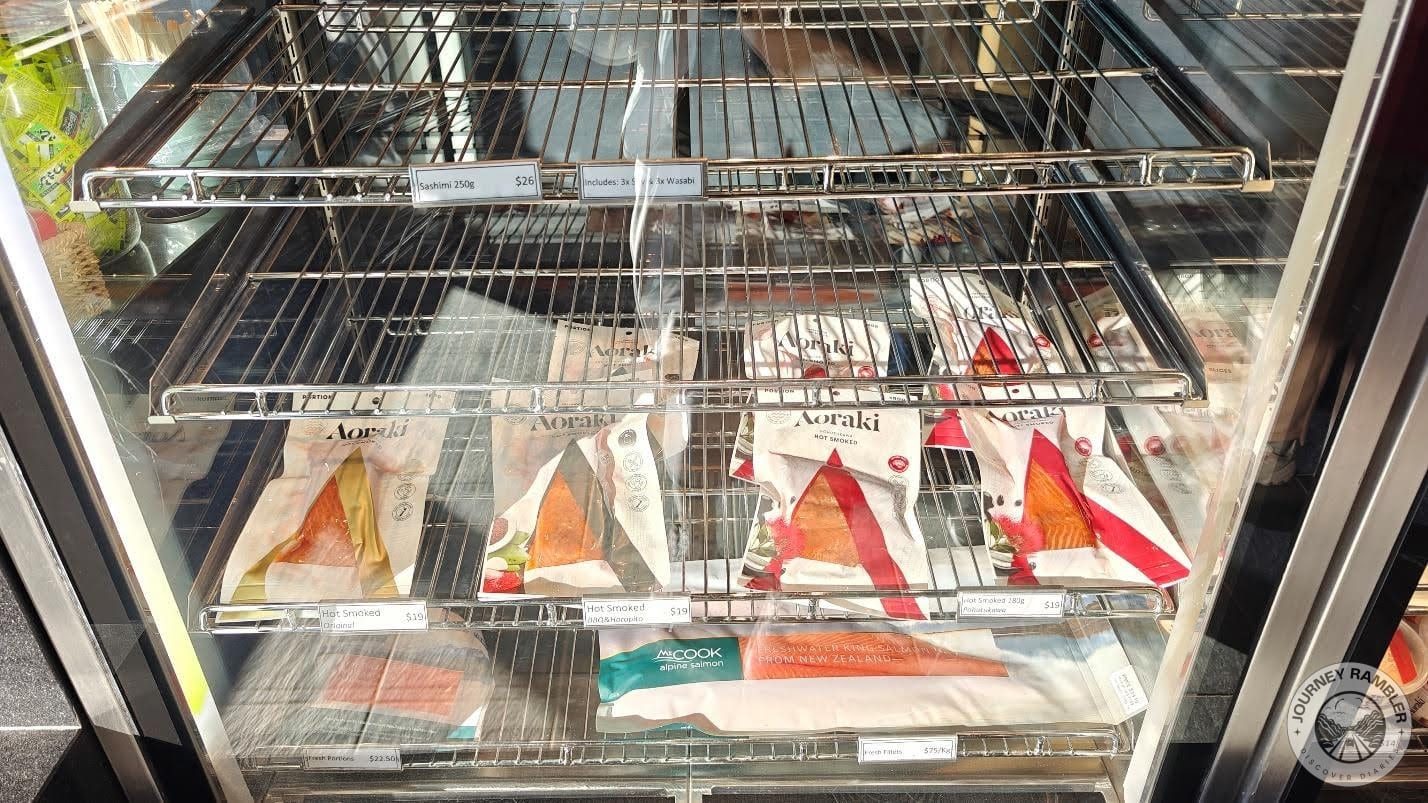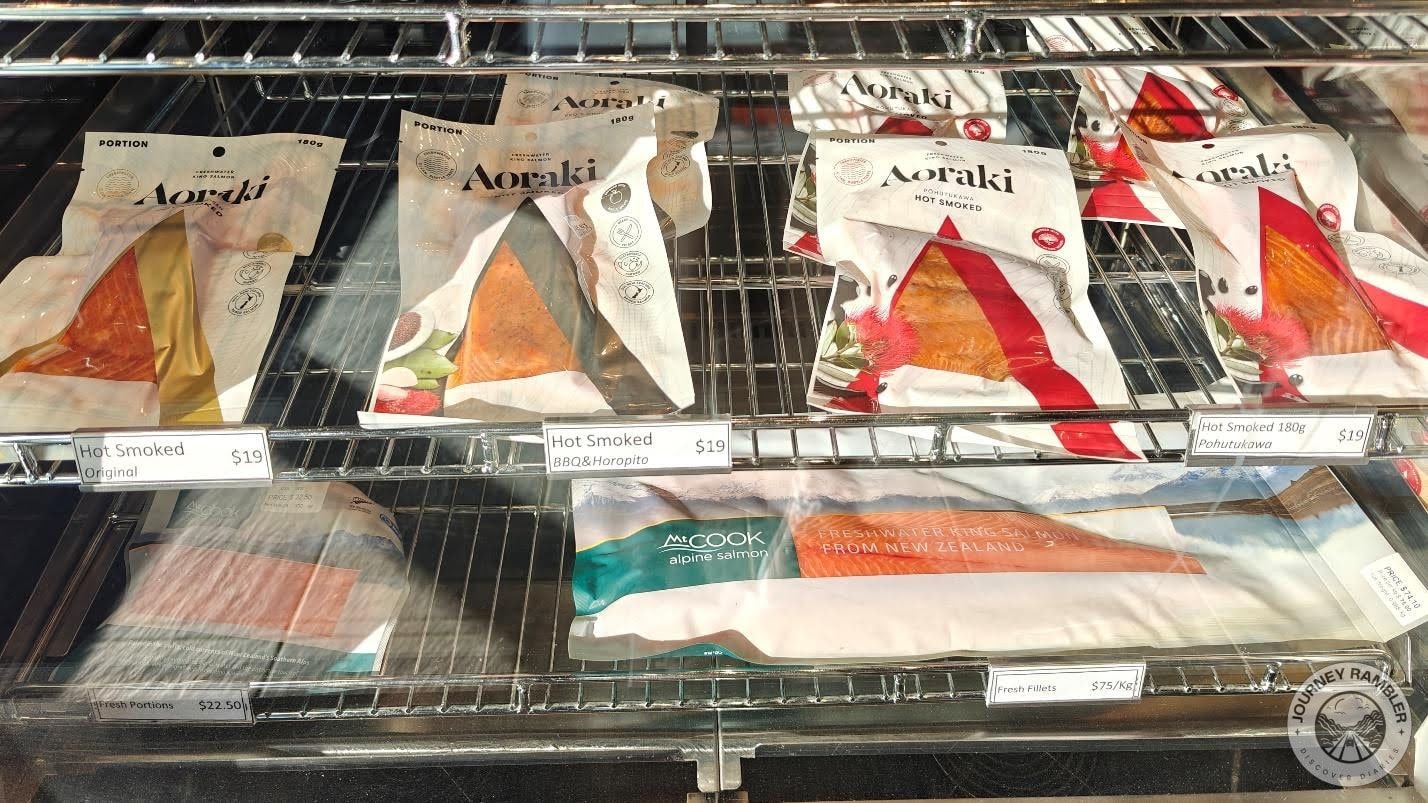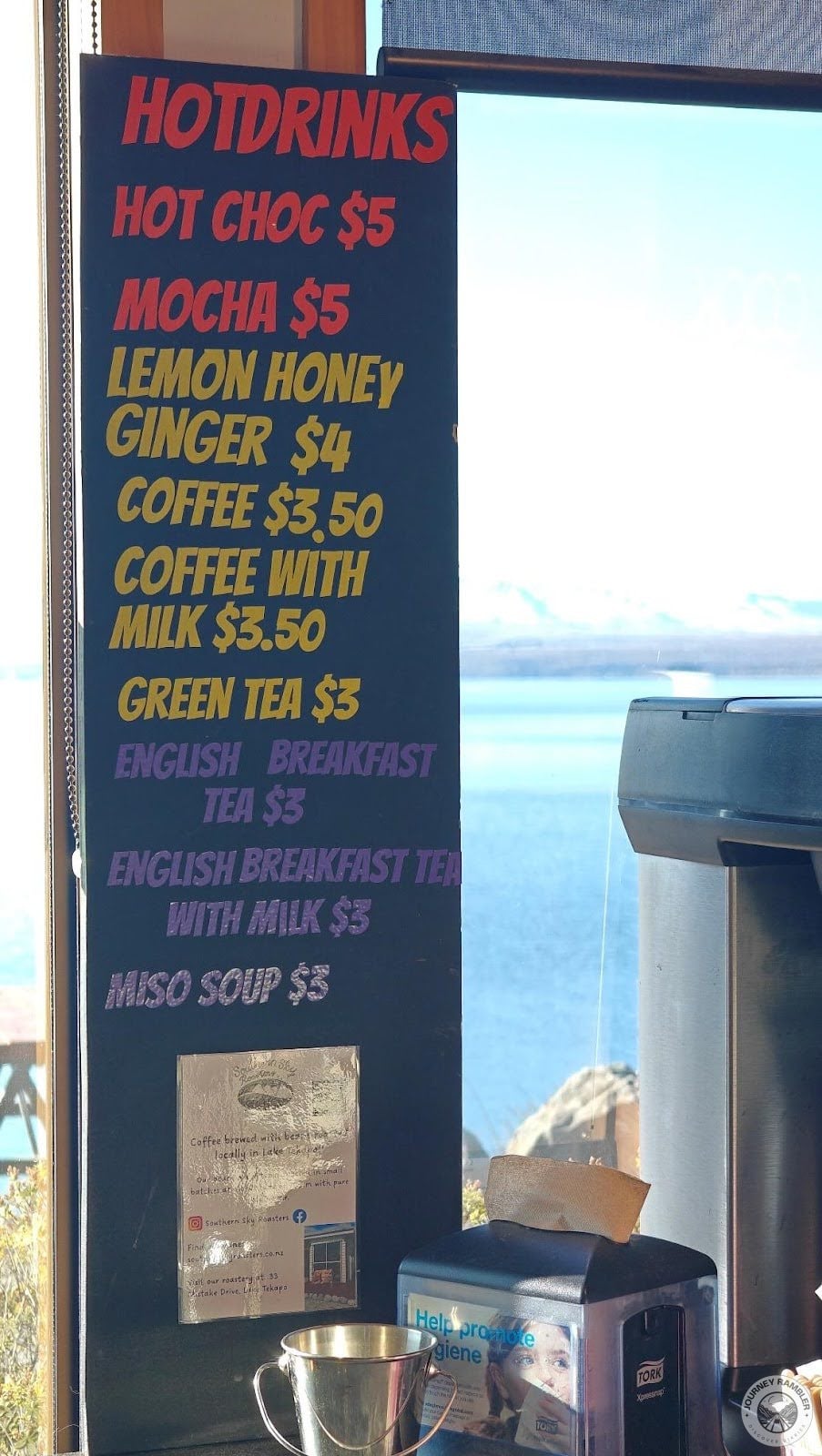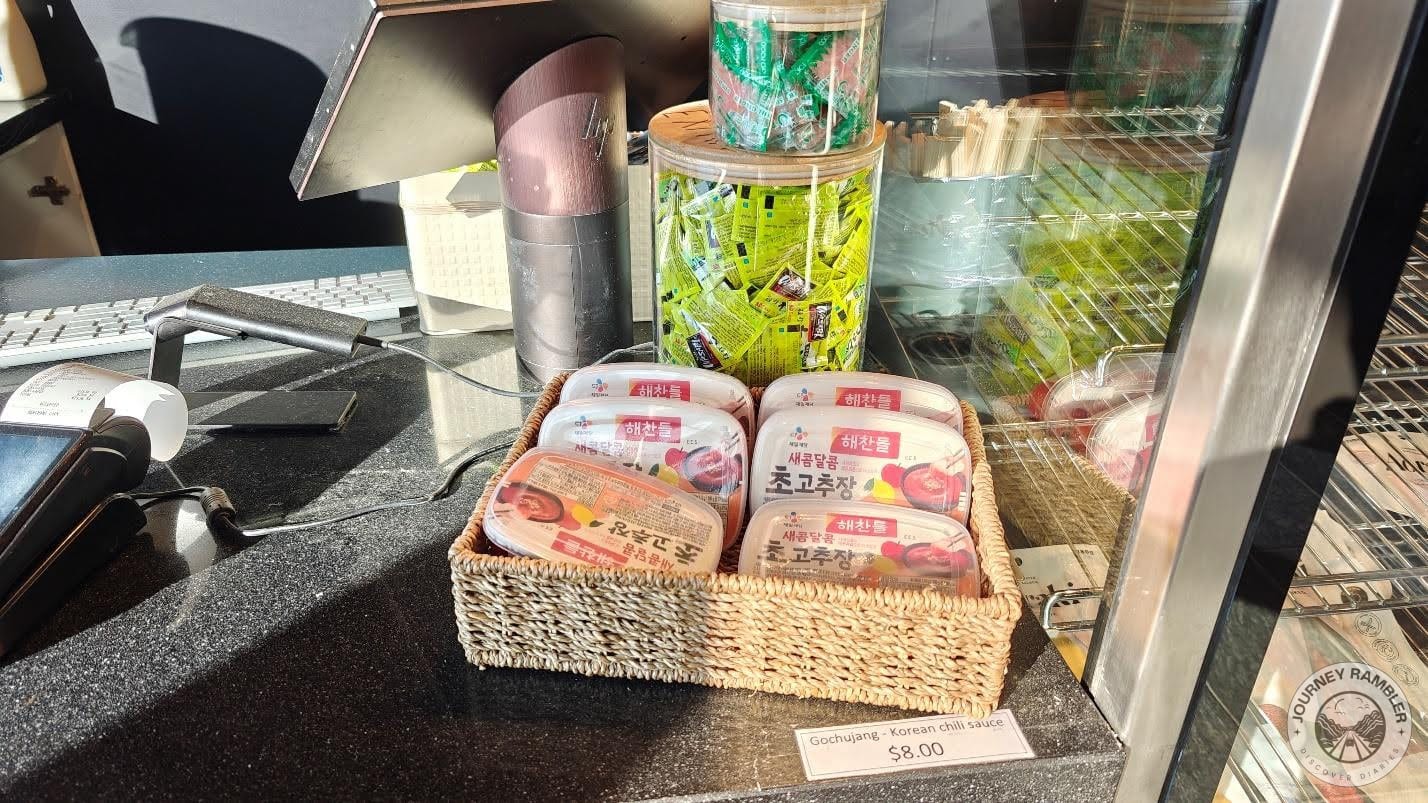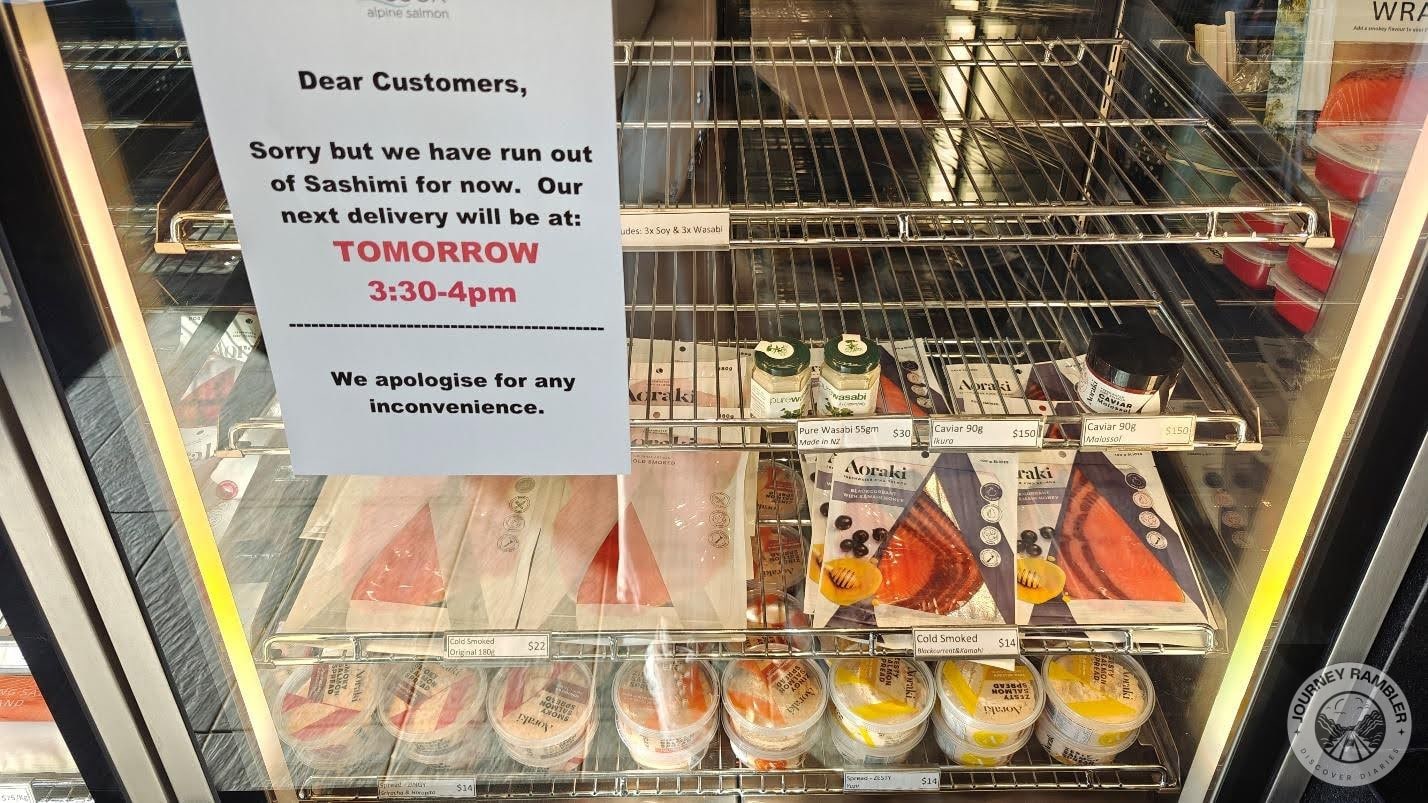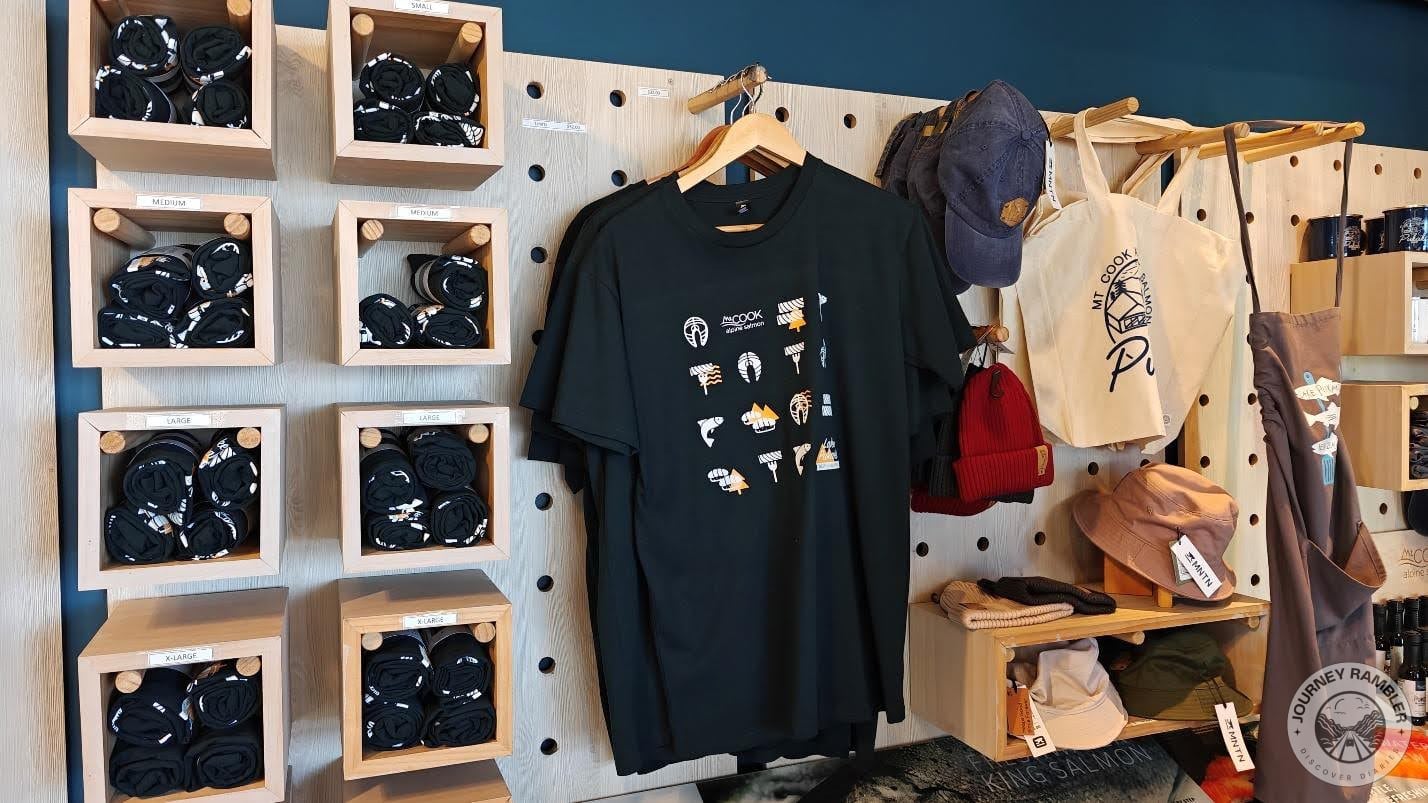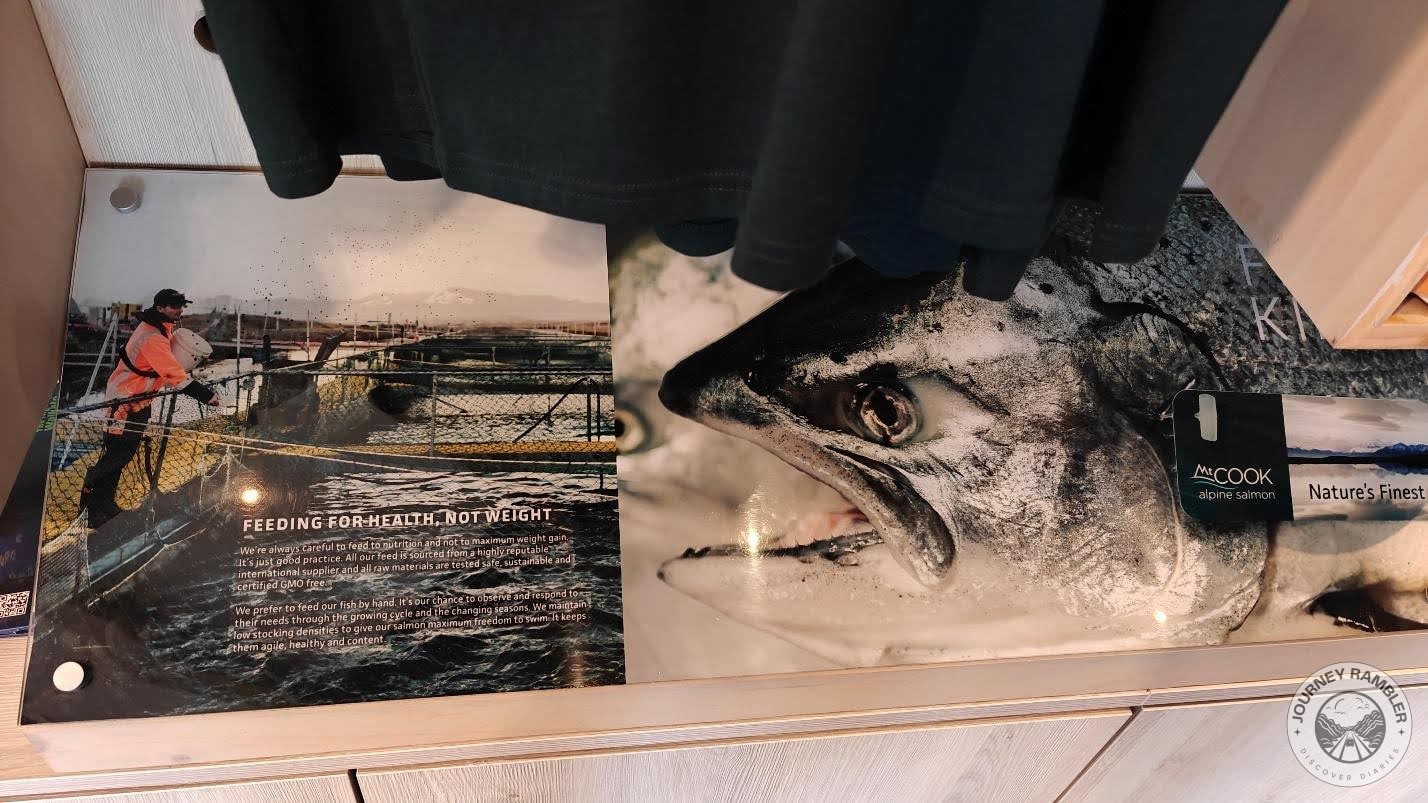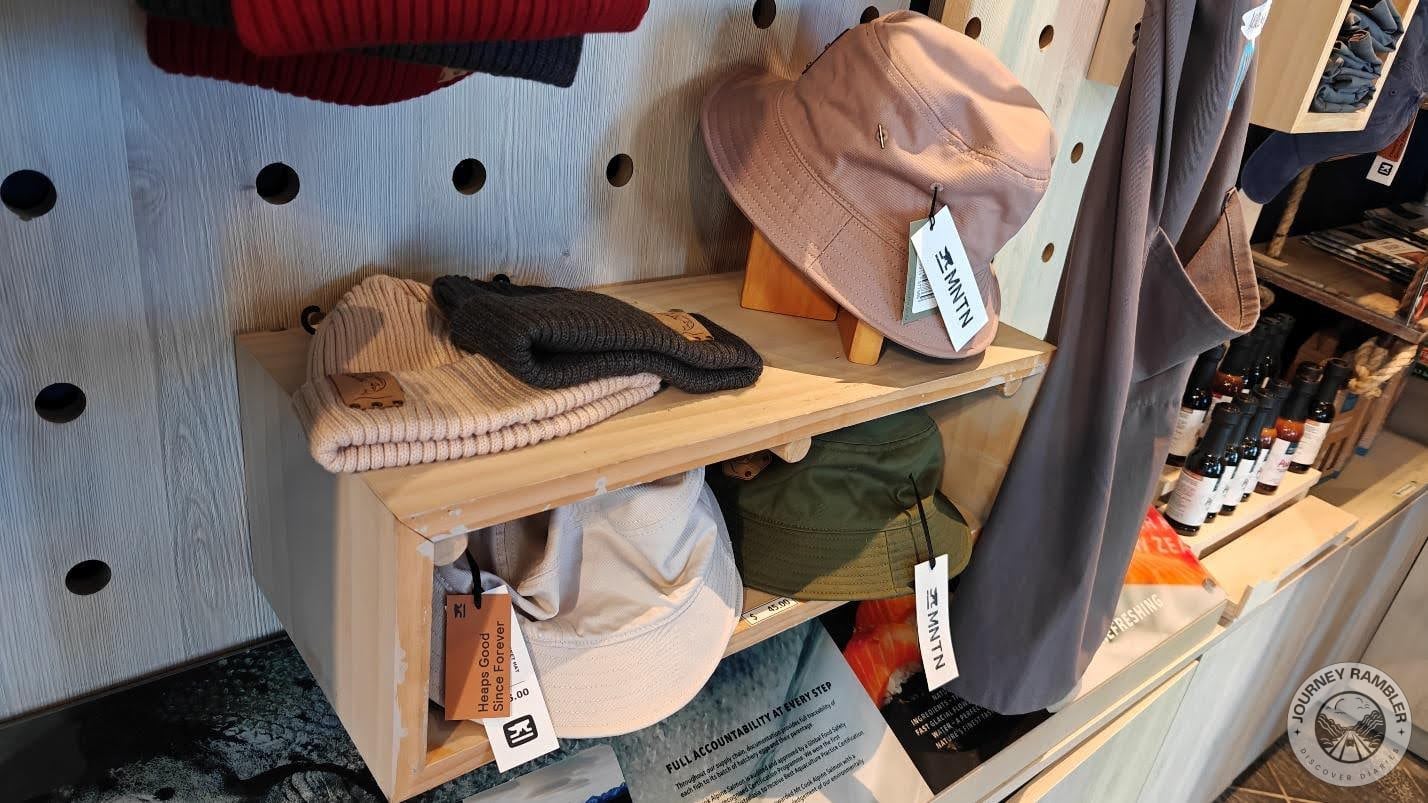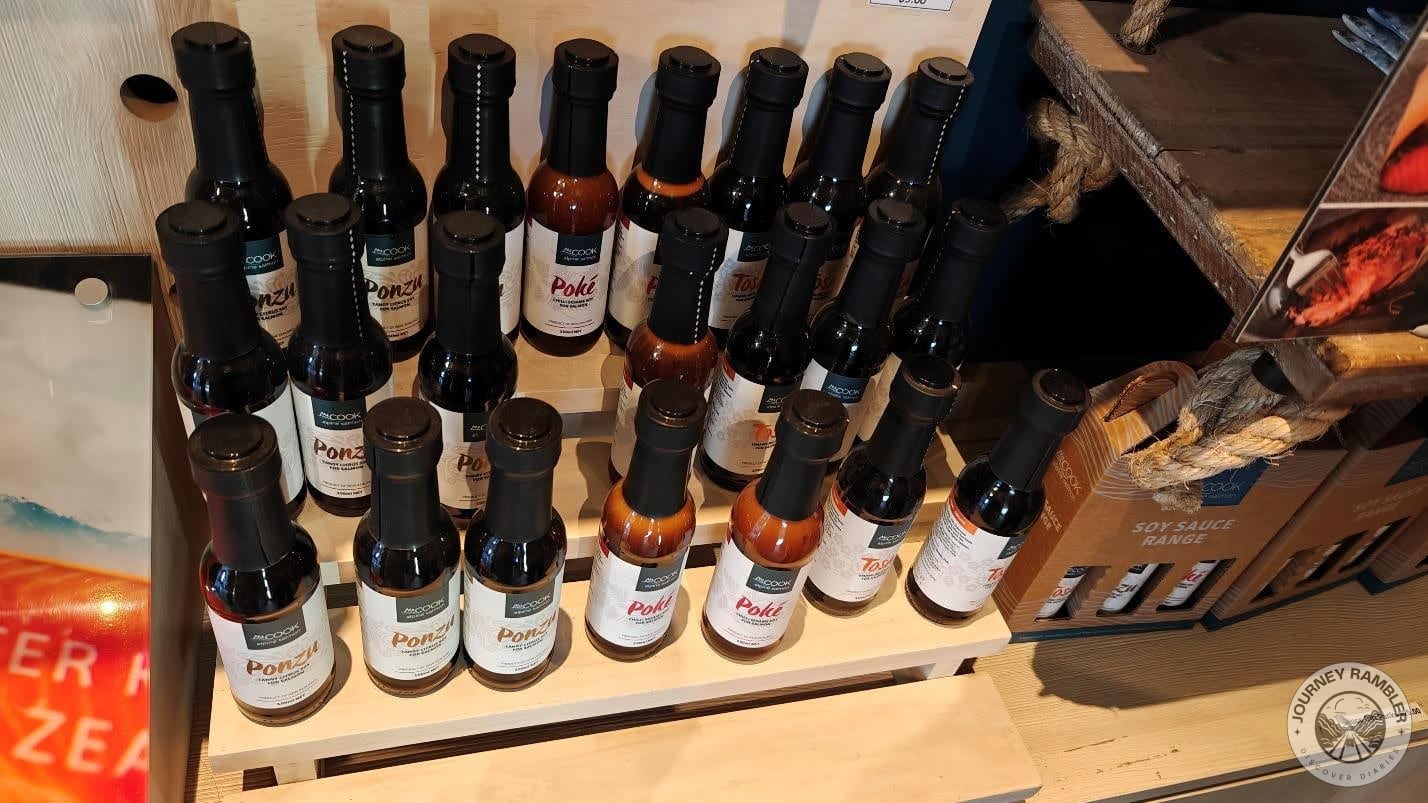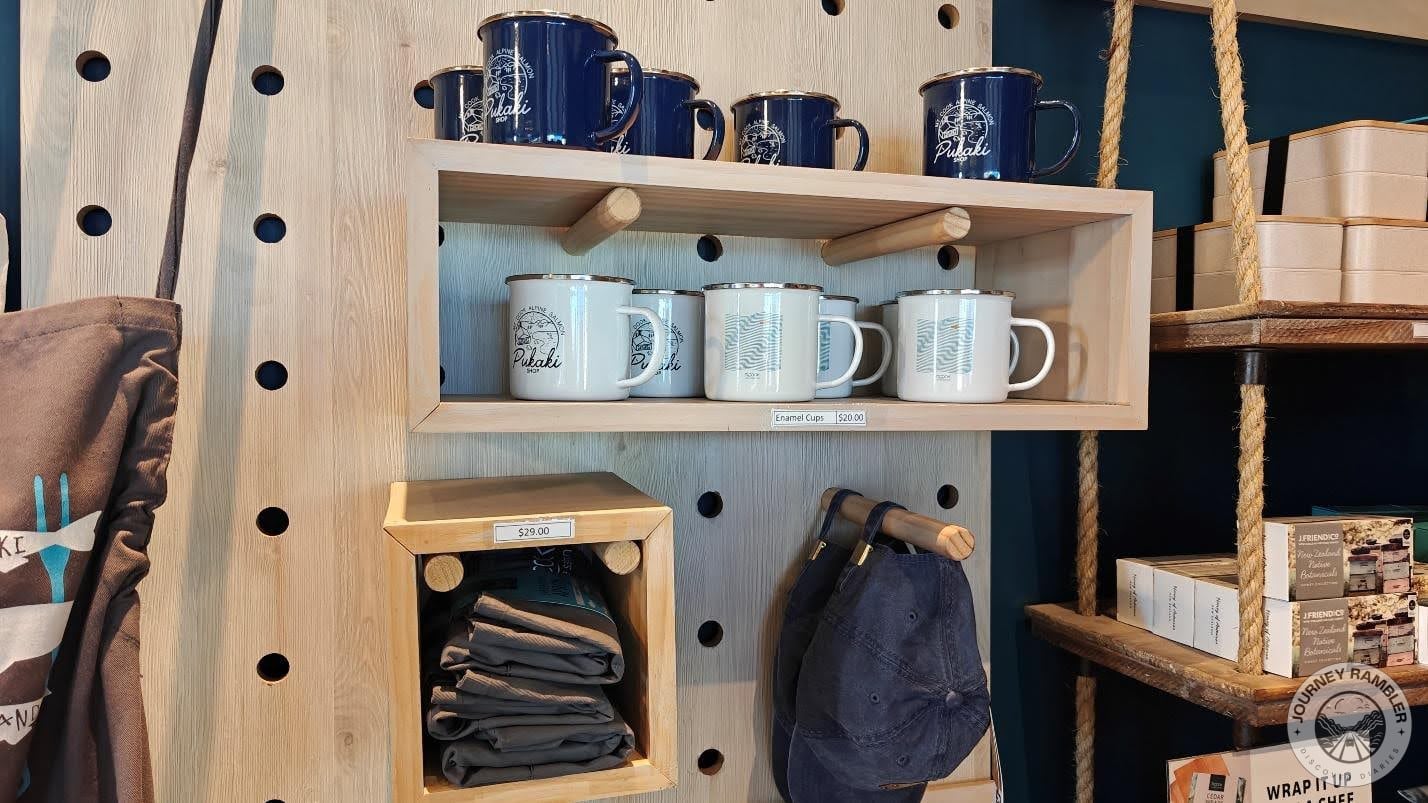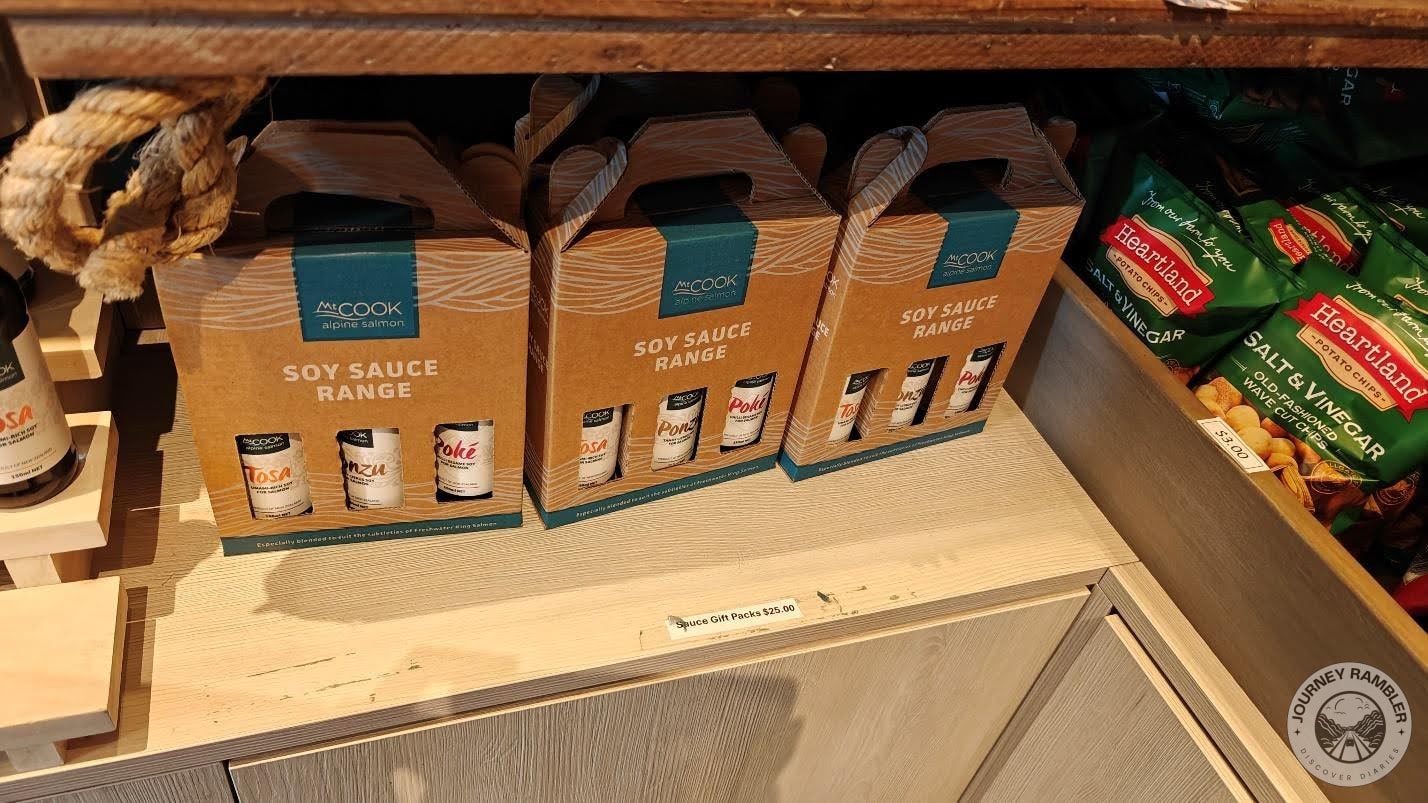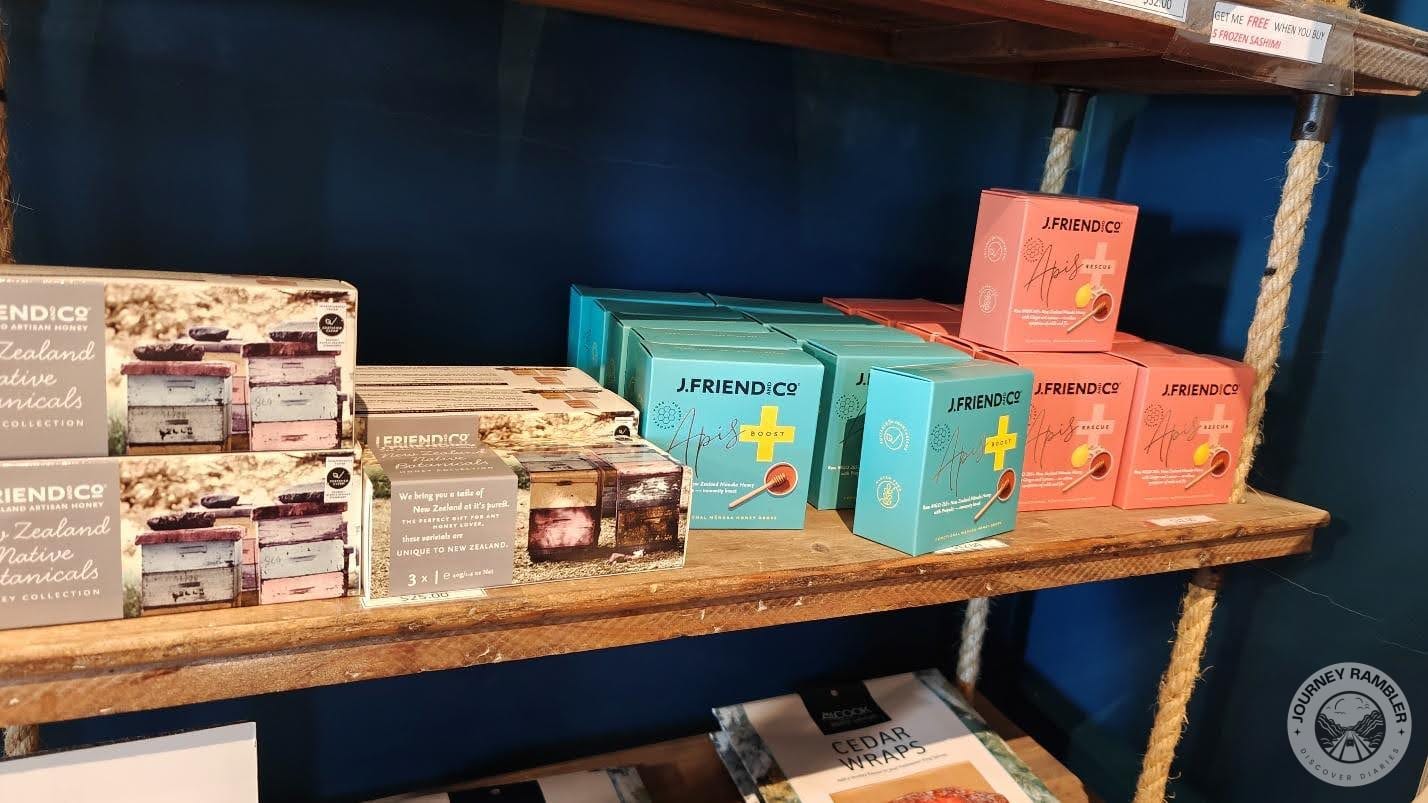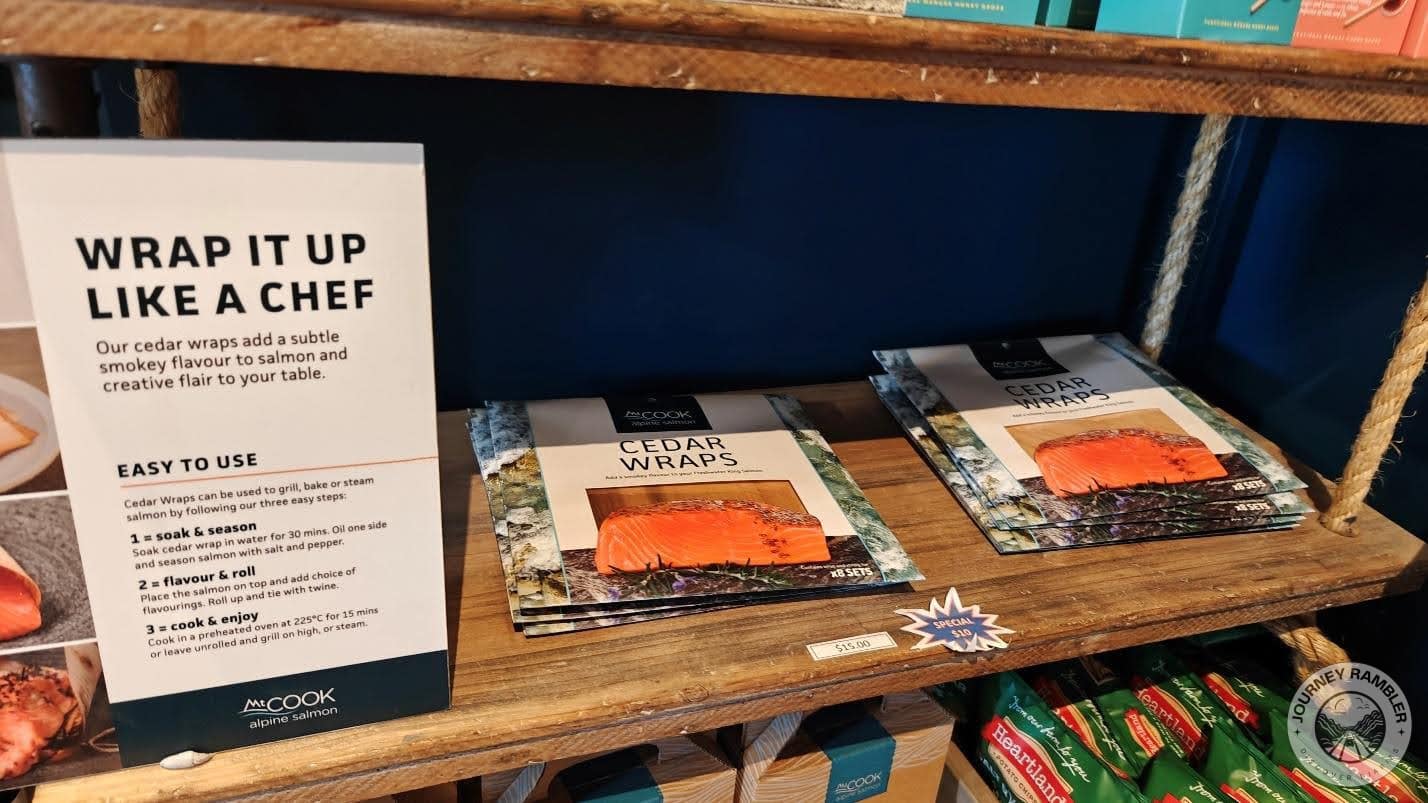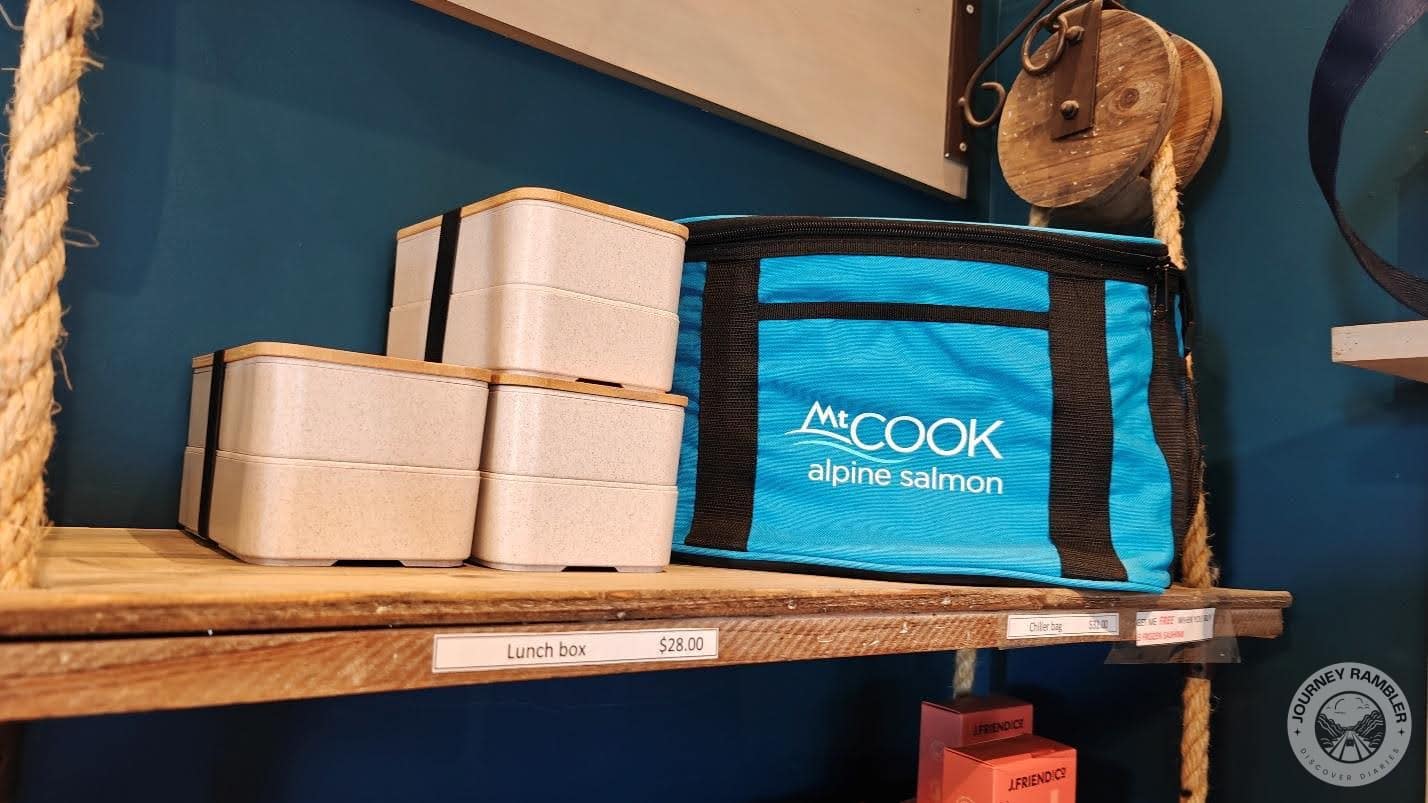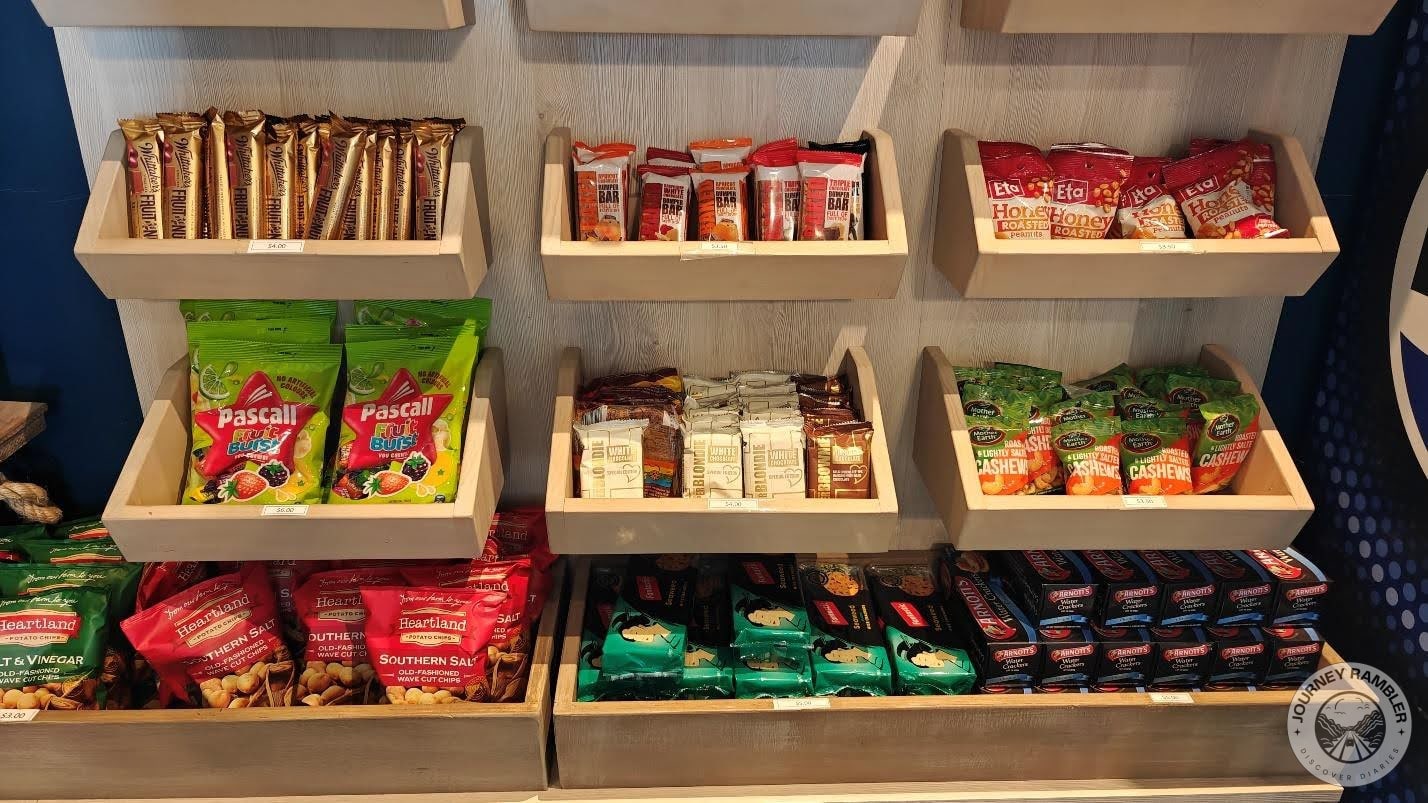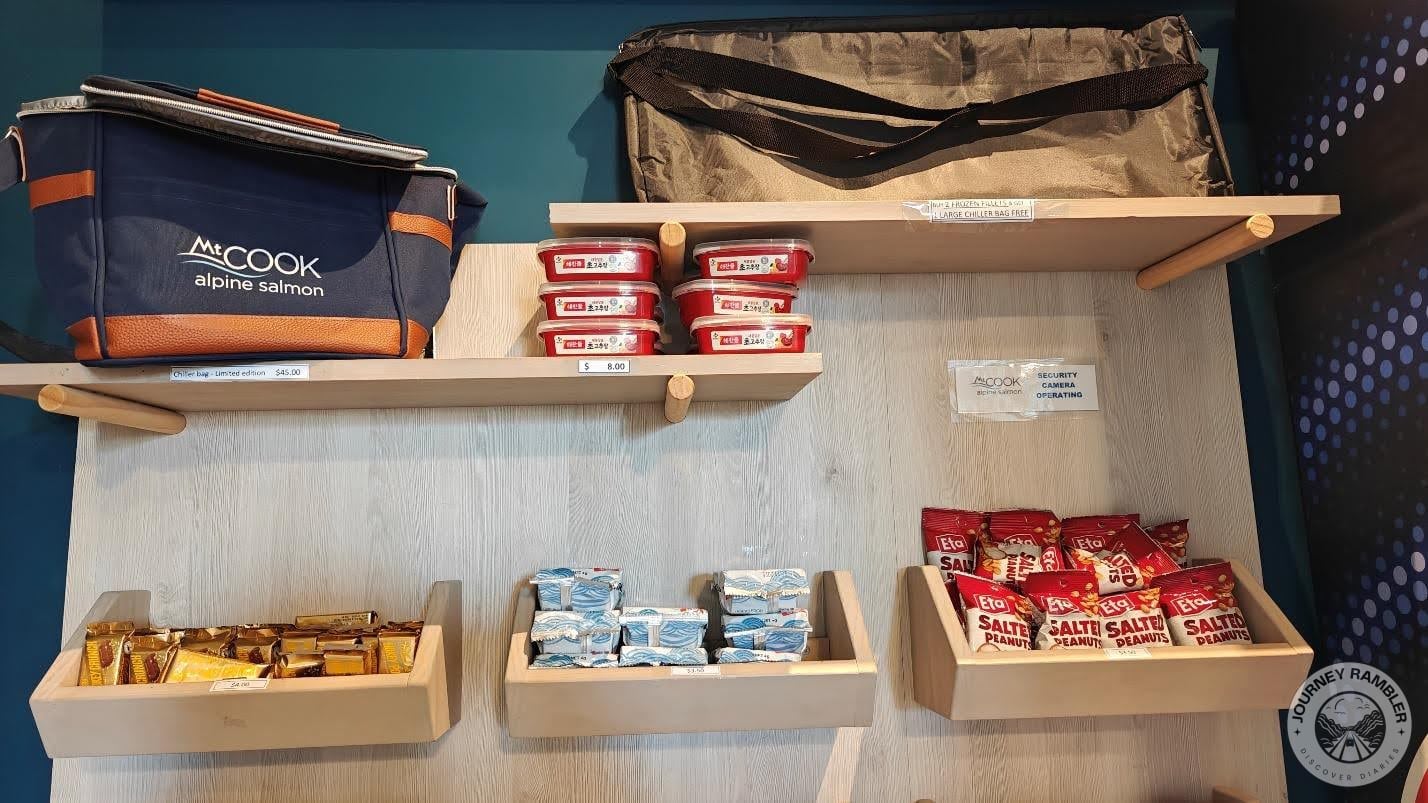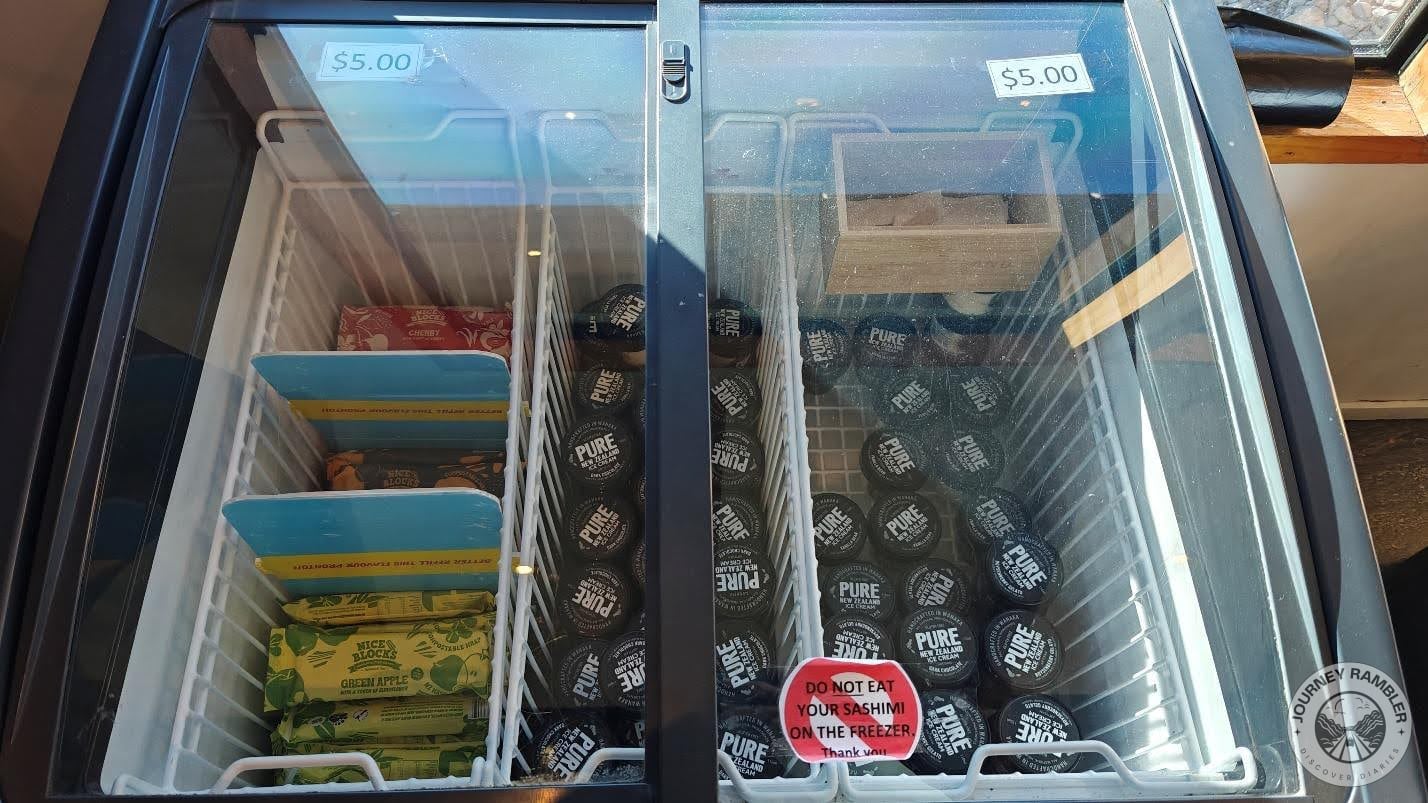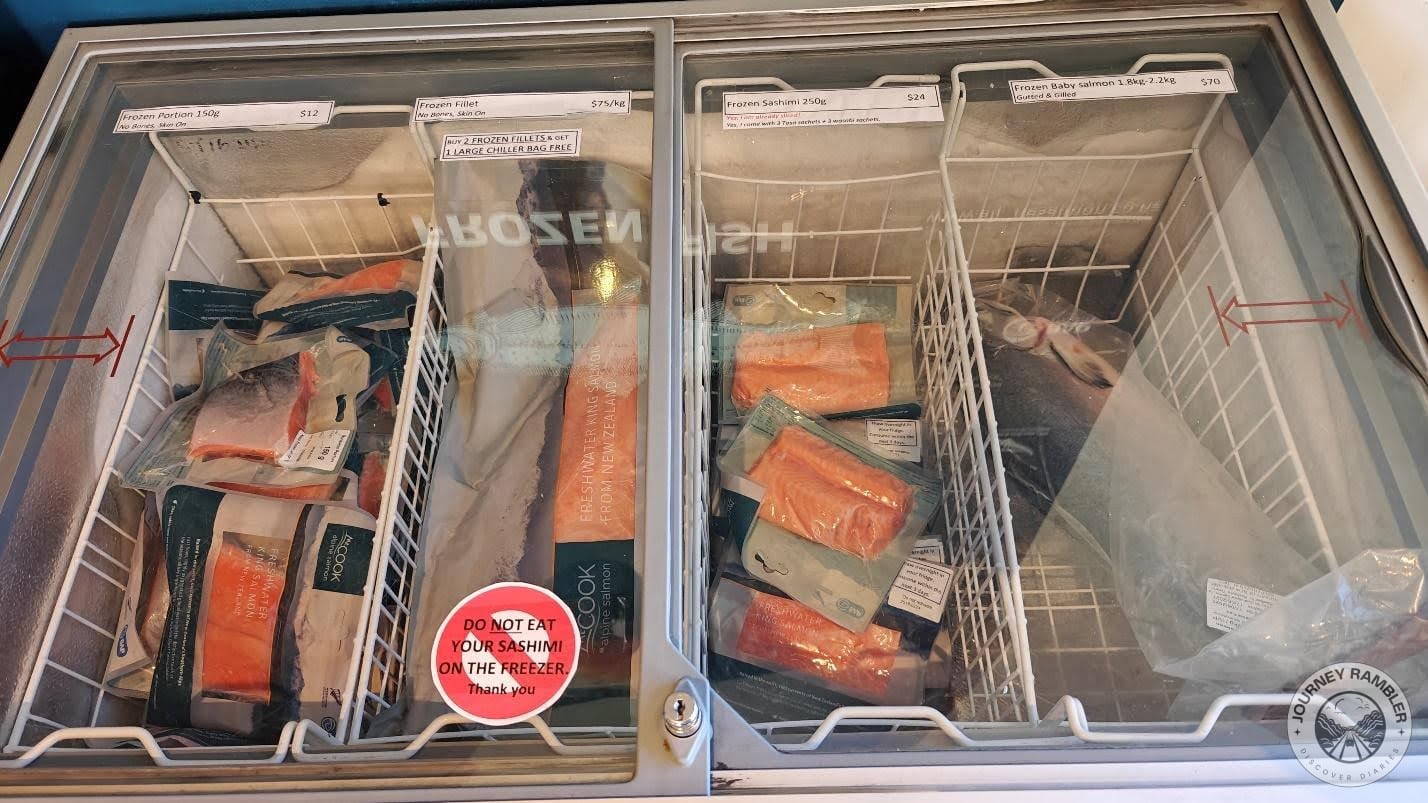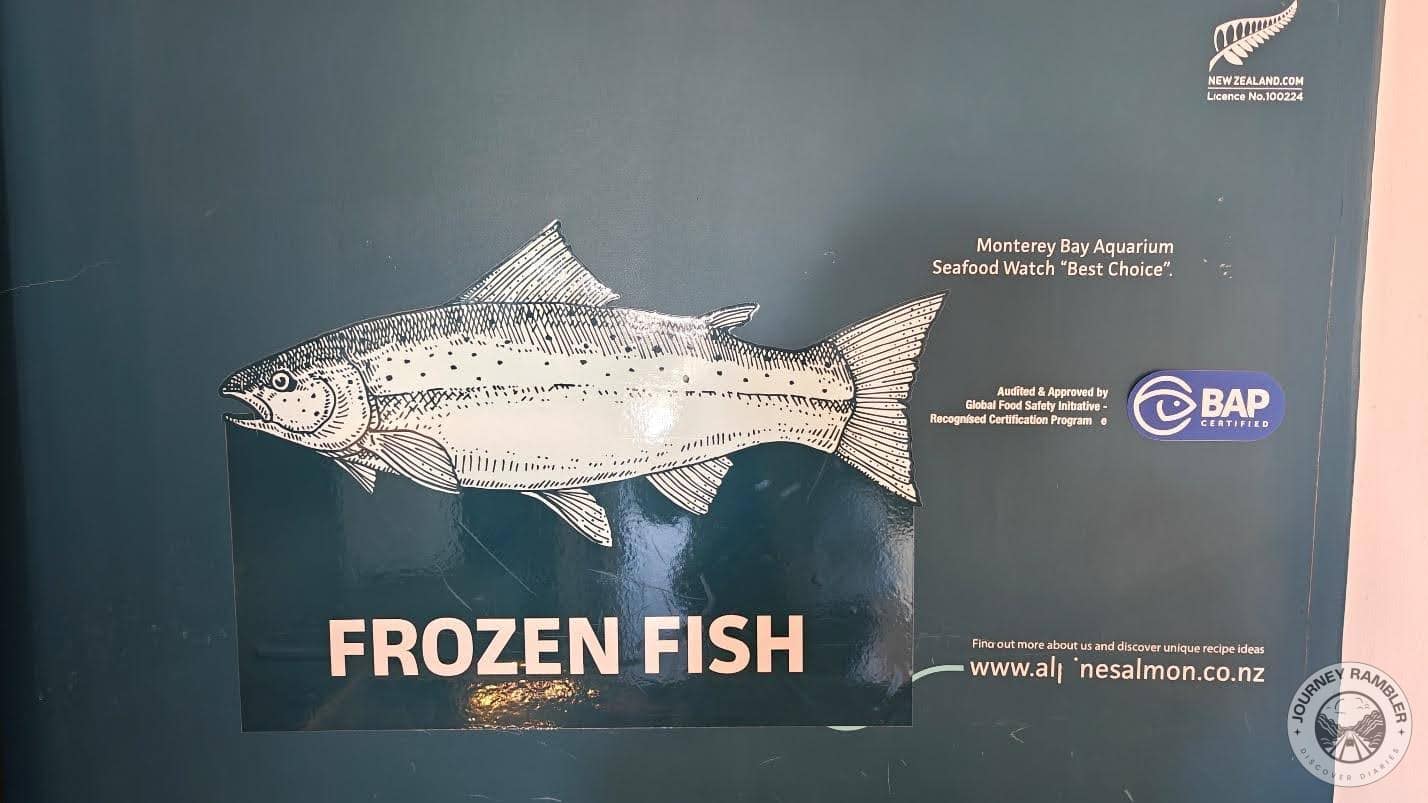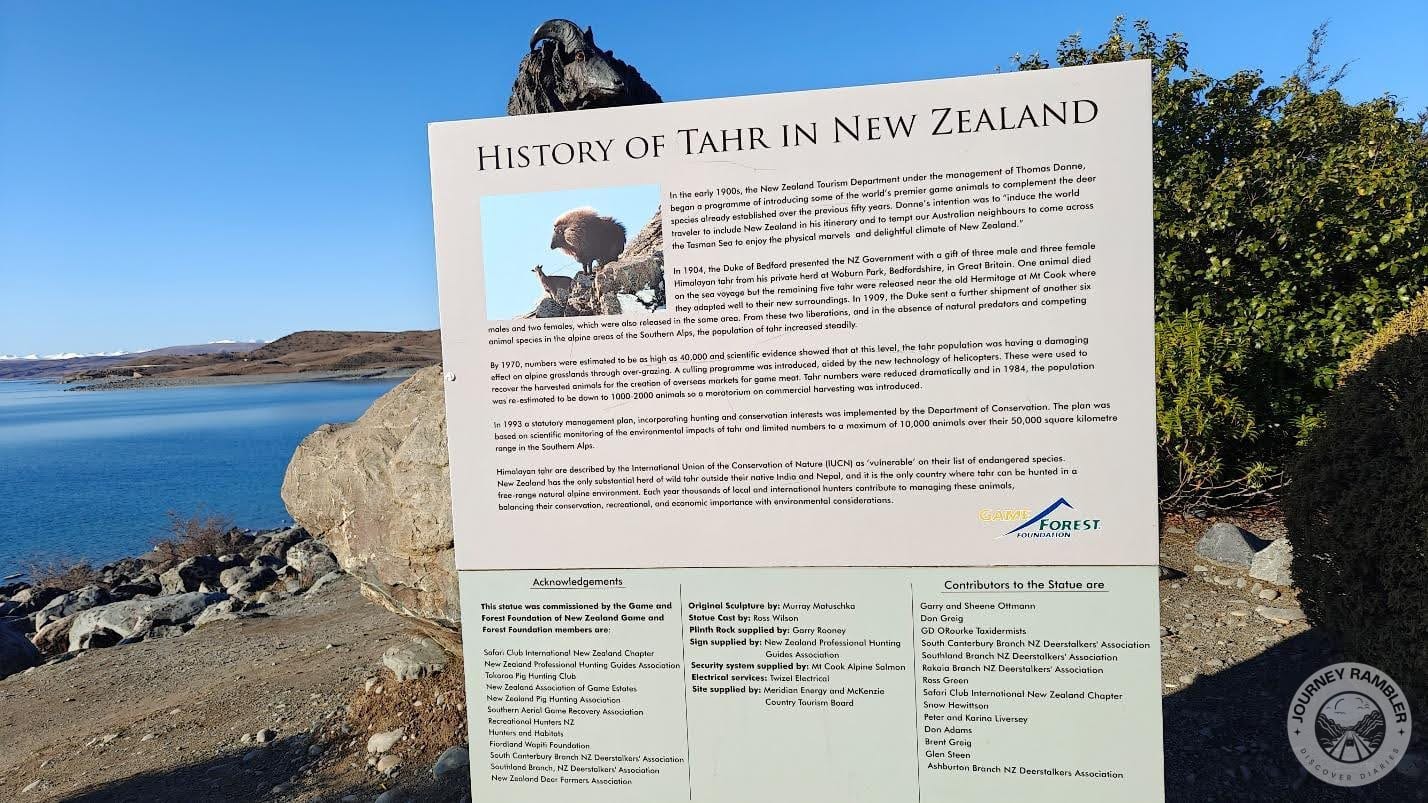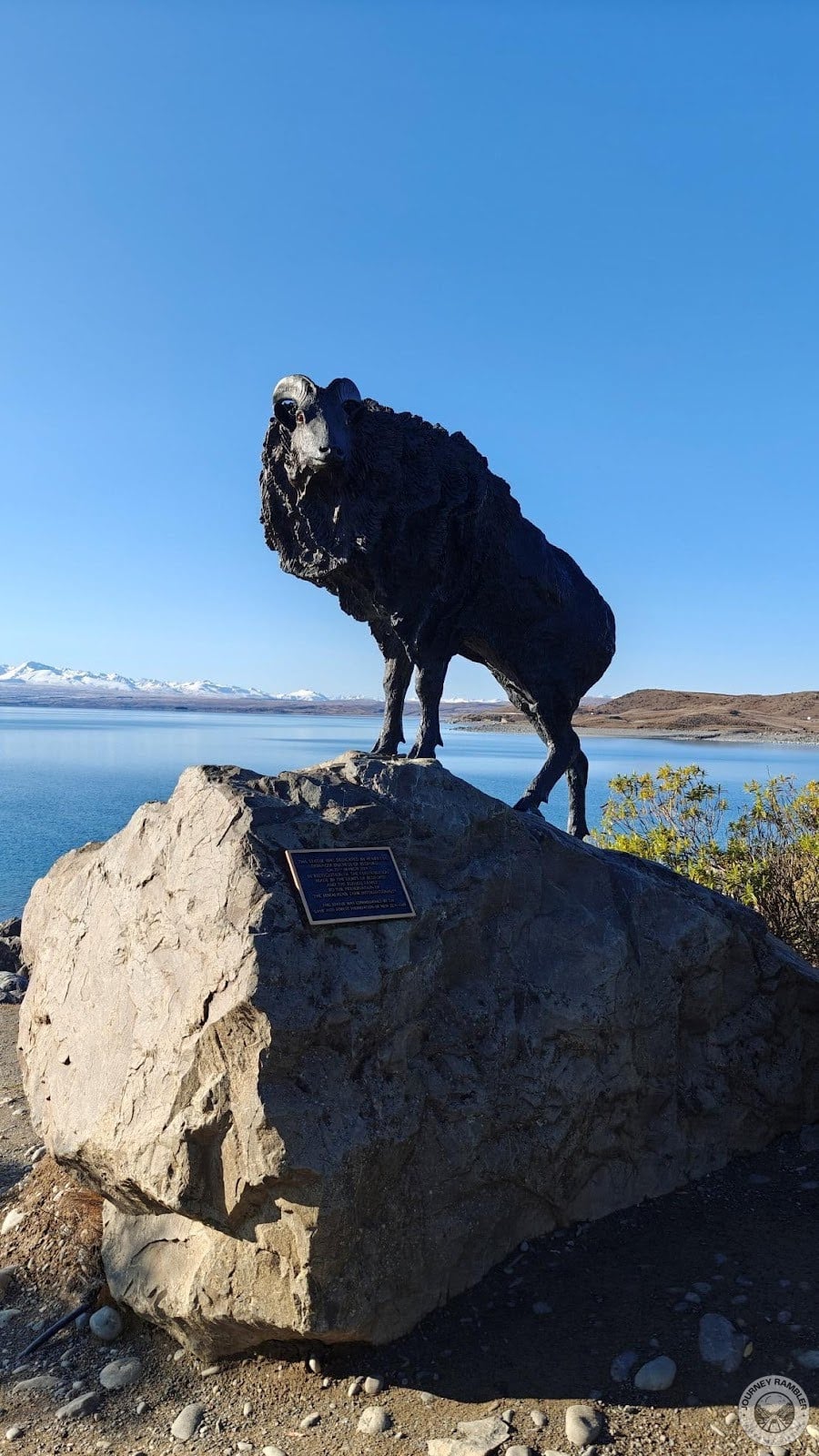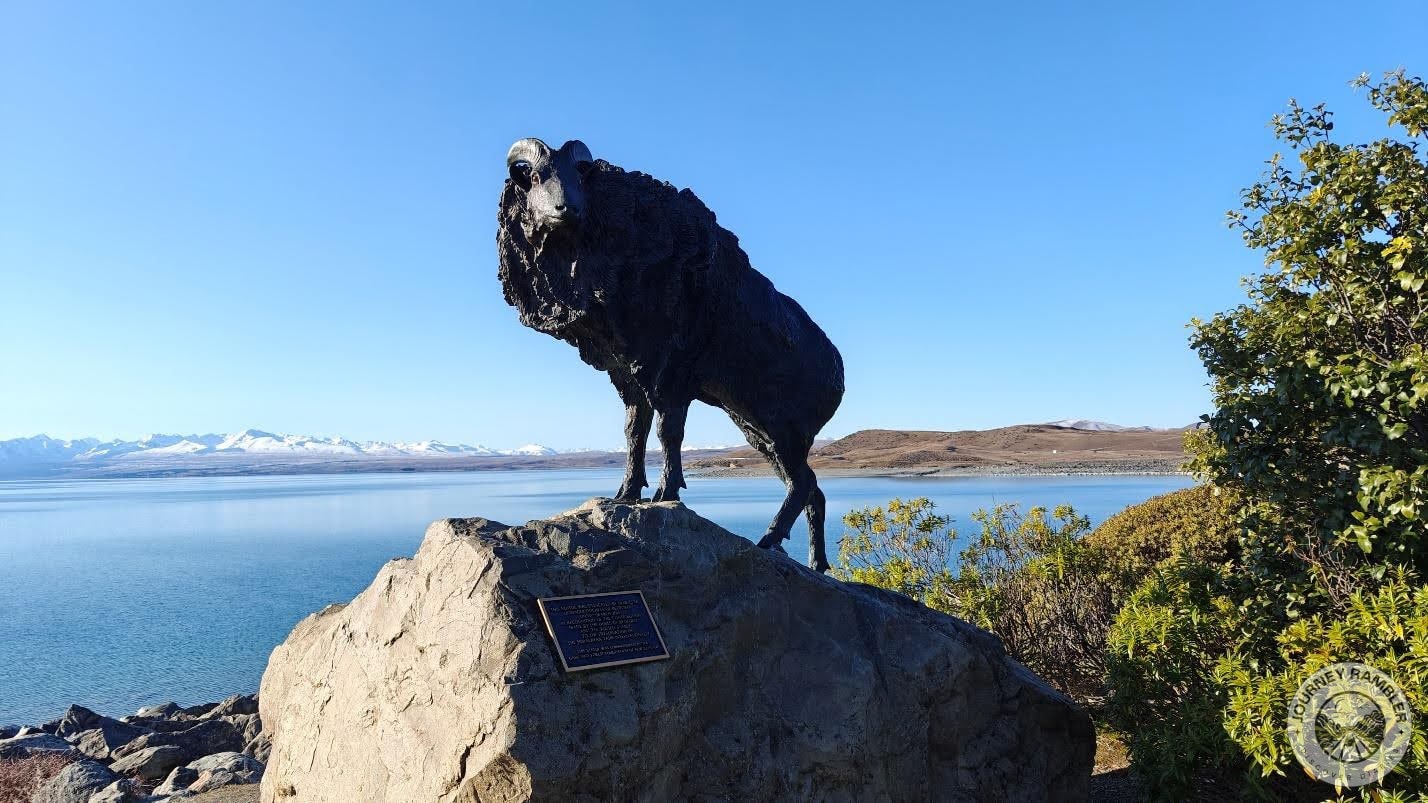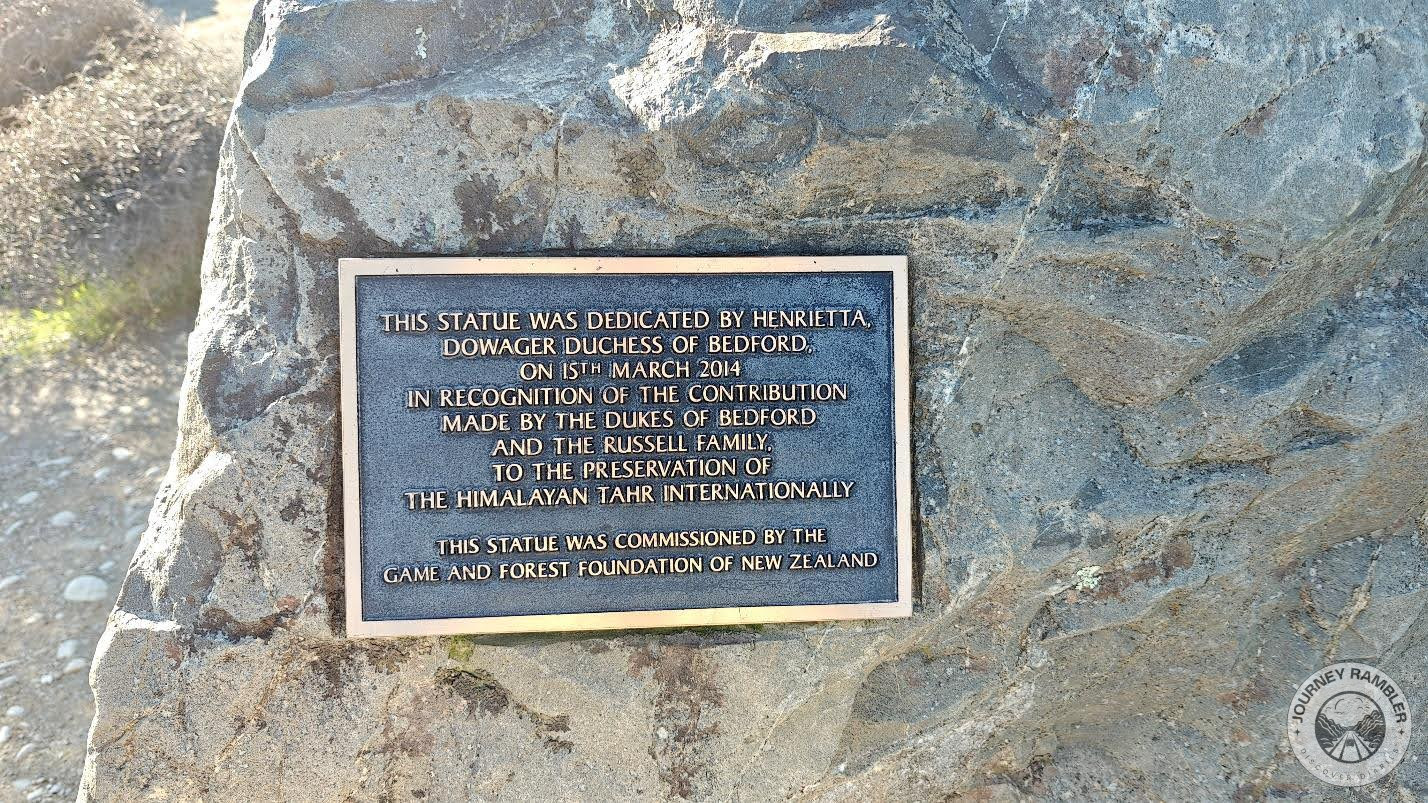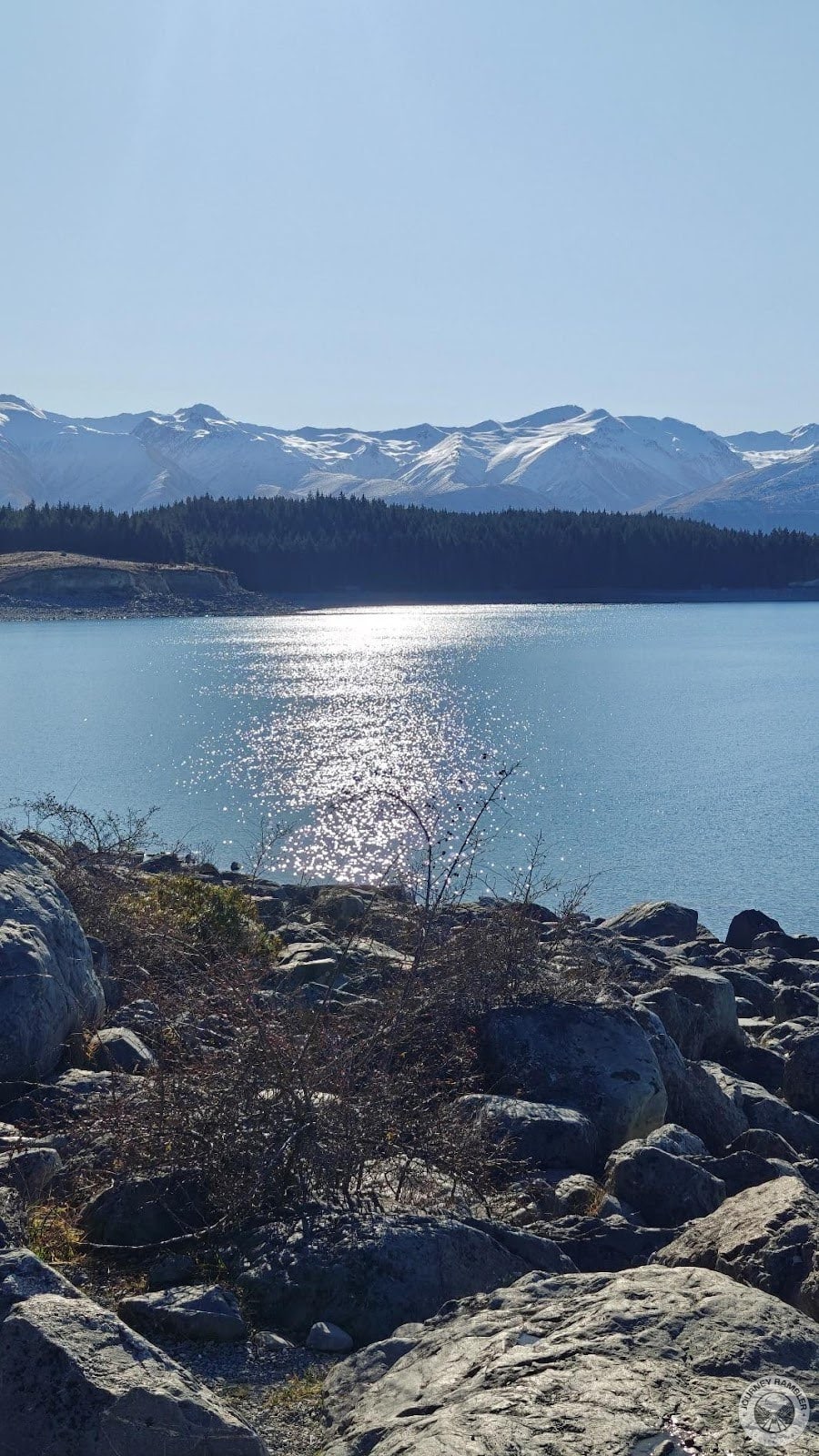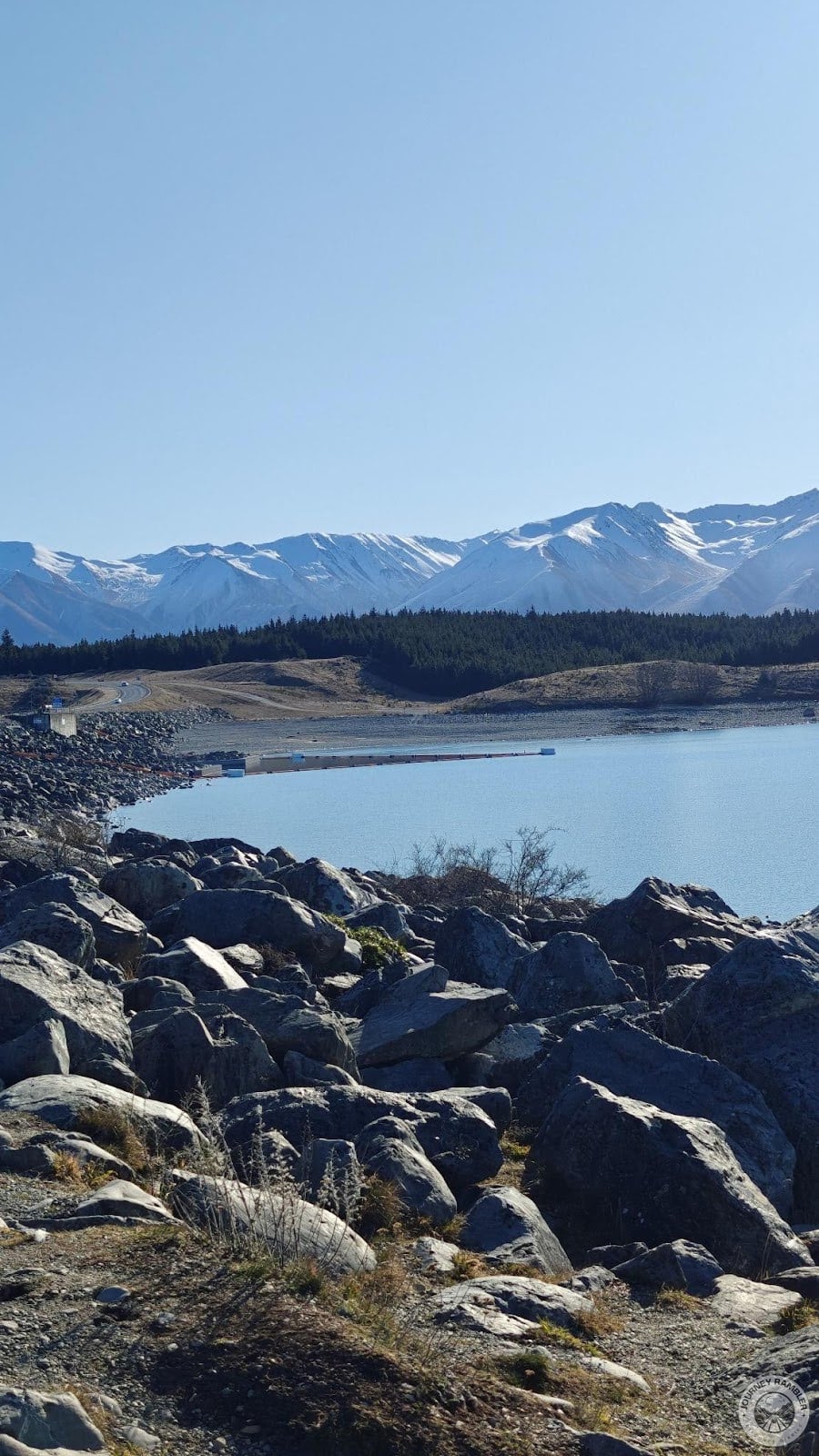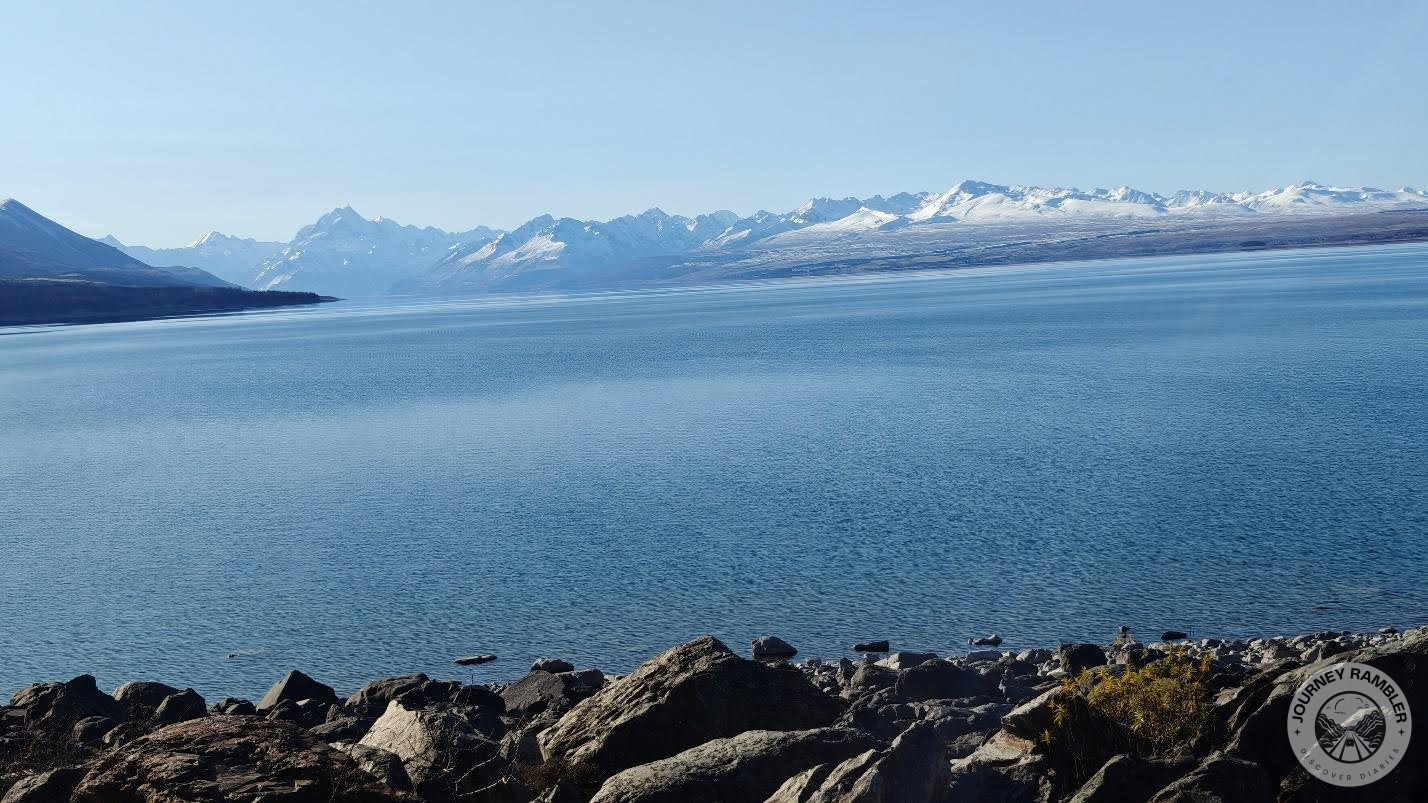Mt Cook Alpine Salmon Shop at Lake Pukaki Visitor Centre: Another Great Stop for Travelers in the South Island
The Mt Cook Alpine Shop was at the Lake Pukaki Visitor Centre. Most visitors who went to the lake stopped at the shop to look at the products. I was also curious to see what they were selling (you can also read my article comparing this place with High Country Salmon and another article which only talks about High Country Salmon).
There was quite a crowd of visitors inside. The place had high ceilings and big windows with a marvelous view!
The shop had shelves and cabinets as well as refrigerators and freezers to store different things.
When I stepped outside, I could see big rocks and boulders right next to the lake.
Mount Cook Hotel Recommendations Based on My Own Stay
🔹 Hermitage Hotel Mt Cook
🔹 Mt Cook Lodge and Motels
There was even a plaque on one of the rocks that said that the Pukaki Information Kiosk had been opened on 18th April 1995 by Derek Kirke.
There was another board welcoming all visitors by the local people of the area.
Tables and benches placed outside had a wonderful view of the lake and the mountains (just like in Hermitage Hotel).
I first decided to visit the information center so that I could learn more about Lake Pukaki. There were signs prohibiting the use of fireworks or of dumping waste at the front.
Everything was neatly displayed with pictures right next to the information.
It told me about the fish and birds of the area. It also talked about how the people lived.
The information center and museum had taken a lot of inspiration from ancient Maori culture. Even the art and designs were inspired by ancient Maori rock drawings.
I learned about the Ngai Tahu, the indigenous people of the South Island. Their traditional village was called Punatahu. That’s where the name of the museum came from.
There was also a lot of information about Lake Pukaki and the traditional travel routes.
I found it very interesting to know more about the area and its people.
I read the stories and mythology of the local people and admired the art.
There was a sketch from 1885 about the kind of houses that used to be built near Lake Pukaki.
The museum also explained how the central position of the Mackenzie region made it easy to travel and transport food.
Tuna and woodhens were some of the animals that were traditionally found and hunted in these areas.
There was a history of their great hunters and the kind of rafts that they would use to sail about.
The New Zealand government had bought a lot of land from the Ngai Tahu in 1848.
I also learned more about Mount Cook, which is called Aoraki in the native language.
The Maori names of the places are still very important to them. I studied a map with all the Maori names marked on it.
There was information about how tuna or eels are protected and harvested in the Lake Pukaki area.
The kind of eel found in New Zealand is the largest freshwater eel in the world. They’re a species that is at risk and needs to be taken care of.
The museum was a wonderful record of the Maori beliefs and way of life. Recording it in a museum meant that it would be remembered for years.
There was a bench in front of a huge glass window with a view of the lake and mountain.
I sat down on the bench to admire the view. I bought a box of freshwater king salmon (maybe I’ll cook this when I get to Mt Cook Lodge and Motels).
Even though it was cold, a lot of people were sitting on benches beside the lake. The sunshine felt really nice.
The unique architecture of the information center was really wonderful.
Signboards showed the way towards the salmon shop or towards the toilets.
At the salmon shop, there was a fridge filled with salmon.
They were selling hot smoked salmon in flavors like Original or BBQ & Horopito.
There were also a number of hot drinks for sale. Visitors could buy hot chocolate, tea or coffee (just like in the café and bar at the Sir Edmund Hillary Alpine Centre at Mount Cook).
There were even boxes of Gochujang, a Korean chili sauce, being sold at the counter.
And there was a notice announcing that they had run out of sashimi for the day.
Food wasn’t the only thing being sold at the shop. As you can see in the image above, many t-shirts, hats, caps, tote bags and even aprons were available.
Books about salmon and salmon fishing were some other items that were being sold at the Mt. Cook Alpine Salmon Shop.
I decided to take a look at some of the hats. There were sun hats to protect people against the sun and also woolen caps to keep people warm.
I looked at the different bottles of soy sauce, like Ponzu, Poke and Tosa. All the bottles were neatly sealed and easy to carry.
Tourists could buy coffee mugs as souvenirs from the shop.
I could even buy a three in one package of soy sauce or snacks like salt and vinegar chips if I wanted to.
They were selling artisanal honey that was a specialty of New Zealand.
A unique item that I saw was something called a cedar wrap and there were instructions about how to use it.
They even had bento boxes and a bag to carry such boxes in!
I browsed through some of the other snacks like energy bars, candy and chips.
Visitors could even buy chiller bags if they wanted to keep their fish fresh and cold.
One freezer held a few different kinds of ice cream bars and cups.
But the other freezer was full of frozen fish.
A sign let me know that the shop was properly certified to sell fish.
Finally, I headed outside and found a statue of a Himalayan tahr. There was a board about the history of tahr in New Zealand.
Tahr weren’t native to New Zealand but they had flourished here.
The statue was almost life-sized.
It had been dedicated by the Dowager Duchess of Bedford.
Lake Pukaki looked lovely, shining in the sun.
Snowcapped mountains could be seen beyond the lake.
I had to take a picture of the lake and the stunning peaks that were visible in the background (And if you want to see more pictures like this, you can read my article about walk on the Tasman River Track.). New Zealand had many beautiful sights and this was one of them.
